 |
by Kris Holt on (#723XM)
Why have one Star Wars game announcement at an edition of The Game Awards when you can have two? Star Wars: Galactic Racer is a podracing (and speeder racing) game from Fuse Games, a studio established in 2023 by former Burnout and Need for Speed developers. It's scheduled to hit PS5, Xbox Series X/S and PC in 2026.The action here is set after the fall of the Empire. With the galaxy in rebuild mode after dealing with that whole mess, an unsanctioned, underground racing circuit called the Galactic League comes into being in the Outer Rim. Here, according to the game's Steam page, "syndicates bankroll chaos and champions are forged."Star Wars: Galactic Racer is run-based, so if your podracer blows up, it might be game over. The action takes place across well-known Star Wars planets in addition to some new ones. The races have branching routes and you'll unlock new abilities on each run.There's a story-driven, single-player campaign, as well as PvP modes. The vehicles are customizable too. Dig it. Where do I sign up, Watto?This article originally appeared on Engadget at https://www.engadget.com/gaming/star-wars-galactic-racer-is-a-podracing-game-set-for-2026-035508891.html?src=rss
|
 Engadget is a web magazine with obsessive daily coverage of everything new in gadgets and consumer electronics
Engadget is a web magazine with obsessive daily coverage of everything new in gadgets and consumer electronics
| Link | https://www.engadget.com/ |
| Feed | https://www.engadget.com/rss.xml |
| Copyright | copyright Yahoo 2025 |
| Updated | 2025-12-21 03:02 |
 |
by Anna Washenko on (#723XN)
So there's good news and bad news about the highly anticipated Exodus coming out of The Game Awards this year. The good news is that there's a fresh trailer showcasing more of the game. The bad news is that the game won't be out until early 2027. The game was originally announced two years ago (also at The Game Awards) and had been pegged for release in 2026.We may be waiting longer to get our hands on Exodus, but the substantial new trailer shows more of what the final product will entail, offering some backstory on main character Jun Aslan. He's the only human who can use the technology developed by Celestials, which are humans that have evolved 40,000 years into the future. The trailer also showcases the character C.C. Orlev, voiced by Matthew McConaughey. (Insert obligatory "alright alright alright" here.) Developer Archetype Entertainment includes some notable names from BioWare, 343 Industries and Naughty Dog, and the BioWare lineage seems particularly strong with this character- and choice-driven science fiction story.This article originally appeared on Engadget at https://www.engadget.com/gaming/exodus-is-delayed-to-early-2027-032610665.html?src=rss
|
by Ian Carlos Campbell on (#723XP)
The last mainline Tomb Raider game was 2018's Shadow of the Tomb Raider, and after spending a few years in video game purgatory, Lara Croft is coming back in two new games. At The Game Awards 2025, Amazon Game Studios announced that Tomb Raider: Legacy of Atlantis will reimagine of one of the hero's early adventures in 2026, and Tomb Raider: Catalyst will continue the series in 2027.Catalyst is developed by Crystal Dynamics and follows Lara through Northern India in the wake of a mythical cataclysm," as she comes into competition with other treasure hunters. Legacy of Atlantis, developed by Crystal Dynamics and Flying Wild Hog, reimagines the very first Tomb Raider game in Unreal Engine 5. And yes, it seems like dinosaurs will be in the mix.A new Tomb Raider game has been in the works officially since at least 2022, when Amazon announced that it would be publishing the next game in the series. Amazon shared that Fleabag's Phoebe Waller-Bridge would be developing a television adaptation of Tomb Raider in May 2024. Sophie Turner, best known for playing Sansa Stark on HBO's Game of Thrones, was cast as Lara Croft in September 2025. With both a show and a game in the works, Amazon clearly seems interested in making Tomb Raider its next big crossover hit after the success of Fallout.Tomb Raider: Legacy of Atlantis will be released in 2026 on PlayStation 5, Xbox Series X/S and PC. The platforms Tomb Raider: Catalyst will be released on weren't shared, but the game is scheduled to be released in 2027.This article originally appeared on Engadget at https://www.engadget.com/gaming/lara-croft-will-return-in-tomb-raider-catalyst-and-a-new-remake-025859998.html?src=rss
 |
by Kris Holt on (#723XQ)
It didn't take too long for a game that a whole bunch of people are excited about to swoop into Grand Theft Auto VI's old release week. Or maybe Rockstar had an idea of was what was coming and delayed its blockbuster by six months to get out of the way of Lego Batman: Legacy of the Dark Knight.Either way, TT Games and Warner Bros. Games brought a new trailer to The Game Awards and revealed that the Caped Crusader's next adventure will hit PS5, Xbox Series X/S, Steam and the Epic Games Store on May 29. The base game will cost $70 and pre-orders are open as of 11PM ET on December 11.Lego games often have a massive cast of characters and, as the trailer revealed, this one will be no different. It will feature the likes of Robin, Nightwing, Batgirl and Catwoman, as well as a murderer's row of super-villains, such as The Joker, Two-Face, Poison Ivy, Mr. Freeze, The Penguin and Bane.Warner Bros. Games is announcing the release date at a bit of an awkward time. Netflix recently had an $82.7 billion bid accepted for a chunk of Warner Bros. Discovery that includes the gaming division. However, Netflix co-CEO Gregory Peters said the company didn't factor Warner Bros. Games into its valuation."While they definitely have been doing some great work in the game space, we actually didn't attribute any value to that from the get-go because they're relatively minor compared to the grand scheme of things," Peters said, according to PC Gamer. "Now we are super excited because some of those properties that they've built, Hogwarts [Legacy] is a great example of that, have been done quite well, and we think that we can incorporate that into what we're offering. They've got great studios and great folks working there. So we think that there's definitely an opportunity there. But just to be clear, we haven't built that into our deal model."This article originally appeared on Engadget at https://www.engadget.com/gaming/lego-batman-legacy-of-the-dark-knight-swoops-onto-pc-and-consoles-on-may-29-024729940.html?src=rss
|
by Ian Carlos Campbell on (#723XR)
South of Midnight is heading to PlayStation 5 and Switch 2 in Spring 2026, developer Compulsion Games announced on X. The third-person action-adventure game launched as an Xbox and PC exclusive, but like plenty of Microsoft's other first-party games, it's heading to competitors' consoles.Mixing platforming with magic-infused combat in a unique setting inspired by the folklore of the South, Compulsion Games' South of Midnight was generally well-received when it was released in April 2025. The game likely reached sizable audience by launching on Game Pass and PC, but coming to PlayStation and Switch will open it up to an even bigger audience.As Microsoft reworks its Xbox brand to focus more on software than hardware, releasing its exclusives on other platforms has become a key part of its ongoing strategy. It tested the water with games like Pentiment, Hi-Fi Rush and Sea of Thieves in 2024, and now everything from Indiana Jones and the Great Circle and Halo are making the jump.This article originally appeared on Engadget at https://www.engadget.com/gaming/south-of-midnight-is-coming-to-ps5-and-switch-2-next-spring-022725892.html?src=rss
 |
by Igor Bonifacic on (#723XS)
On Thursday evening, President Donald Trump signed an executive order calling for a single, nationwide regulatory framework governing artificial intelligence at the expense of the ability of different states to regulate the nascent technology. To win, United States AI companies must be free to innovate without cumbersome regulation," the order states. But excessive State regulation thwarts this imperative."As was expected after a draft of the order leaked earlier this week, the centerpiece of the document is an AI Litigation Task Force whose sole responsibility shall be to challenge state AI laws inconsistent" with the president's policy vision. US Attorney General Pam Bondi has 30 days to create the task force, which shall meet regularly with the White House's AI and crypto czar, David Sacks.As laid out in the president's AI Action Plan from July, the administration will also limit states with onerous" AI laws from accessing federal funding. Specifically, the secretary of commerce will target funding available under the Broadband Equity Access and Deployment (BEAD) Program, a $42.5 billion effort to expand high-speed internet access in rural communities.Advocacy groups were quick to criticize the president's order. This executive order is designed to chill state-level action to provide oversight and accountability for the developers and deployers of AI systems, while doing nothing to address the real and documented harms these systems create," Alexandra Givens, president and CEO of the Center for Democracy and Technology, said in a statement provided to Engadget. States that take steps to protect their residents from such harms should not be subject to threats of legal attacks; nor should the administration punish rural Americans by threatening to withhold funding for the broadband services that could connect them to AI in the first place."It's worth noting President Trump's previous attempts to curb the ability of states to regulate AI as they see fit has proven unpopular across the political spectrum. As part of his One Big Beautiful Bill, the president attempted to impose a 10-year moratorium on state-level AI regulation. That clause was eventually removed from the legislation in a decisive 99-1 vote by the Senate.This article originally appeared on Engadget at https://www.engadget.com/ai/trump-orders-creation-of-litigation-task-force-to-challenge-state-ai-laws-022657022.html?src=rss
|
 |
by Anna Washenko on (#723XT)
Frictional Games is back with a new game that looks primed to carry on the studio's tradition of excellence in horror. It's called Ontos, and it's slated to launch on PC, PlayStation and Xbox next year. The trailer debuted during The Game Awards 2025.The company's past projects include Amnesia: The Dark Descent and SOMA, and this new title is also looking pretty dang creepy. It looks like things will take a philosophical turn, with a story of trying to piece together your father's past that leads you to questioning the meaning of life and reality. The team is going big with the casting, with Stellan Skarsgard playing one of the main roles in the trailer. This is one that any horror fans will want to keep on their radar.This article originally appeared on Engadget at https://www.engadget.com/gaming/the-devs-of-soma-are-back-with-a-spiritual-successor-called-ontos-021535060.html?src=rss
|
 |
by Kris Holt on (#723W7)
Larian Studios didn't rest on its laurels for long. Two years after taking home the Game of the Year prize for Baldur's Gate III at The Game Awards, the developer popped up again at the 2025 edition of the ceremony to announce its upcoming project, which is the next entry in the Divinity series. Simply called Divinity, this will be the studio's biggest game to date with more breadth and depth than ever before," according to TGA host Geoff Keighley.After 2017's Divinity: Original Sin II, Larian took a break from the series with which it established itself to make BG3. The rumor mill had been churning about a new Divinity game after Keighley shared a photo of a statue that was erected in the Mojave Desert. The shape of the statue matched a Divinity logo that was trademarked recently.Before the reveal trailer was shown at The Game Awards, a short (and rather neat) live performance took place in which some actors were hoisted into the air. The trailer itself is pretty gruesome. It references The Wicker Man, as large wooden effigies with people chained inside are set ablaze. I won't spoil what else happens other than to say it's pretty gruesome, so maybe don't watch it quite yet if you've just had dinner.Larian hasn't announced a release window for Divinity yet.This article originally appeared on Engadget at https://www.engadget.com/gaming/larian-studios-is-returning-to-the-divinity-series-with-divinity-015833088.html?src=rss
|
 |
by Kris Holt on (#723W8)
Many of the big announcements at The Game Awards are for completely new projects, some of which are total surprises (if you had an Okami sequel on your bingo card last year, you're either in the know or probably used up all your luck for the next few years). We'll often get updates on games that were previously announced too. The trailer for Order of the Sinking Star is something a little different, as it's a game that Braid designer Jonathan Blow has been working on fairly openly since releasing The Witness in 2016.The trailer revealed some new details, including confirmation of the expected title and a release window (2026 on Steam, with more platforms to be announced). Ahead of The Game Awards, Blow gave Engadget a preview of the game and explained some of its many complexities.Fundamentally, Order of the Sinking Star is a grid-based puzzle game in which you'll move blocks around to complete an objective. You might know of this as a Sokoban game, named after the series Hiroyuki Imabayashi created about pushing boxes around a warehouse.But this is a Jonathan Blow game, so nothing stays too simple for very long. Blow and his team took the core concept of pushing objects around and built on it in myriad ways, with a wide array of environments, mechanics and characters for you to get to grips with.Order of the Sinking Star starts with you playing as a deposed queen from another world who is transported to a strange place. This turns out to be the tutorial. Among other things, you'll find out about the undo button, a handy option you can use to revert your actions if you get stuck. It's probably worth being careful with this button, as Blow says it's possible to undo thousands of moves with it. There's a level reset option too.The first phase of the game has four distinct territories with their own characters, stories and gameplay mechanics. One of these realms has a fantasy theme with a warrior character who can push multiple objects that are in a row. His friend, the thief, can only pull objects. The wizard, meanwhile, can teleport and swap positions with objects or other characters. Sometimes, you'll use multiple characters in a level and swap between them to solve puzzles. There's a talking boat somewhere, too.You'll take what you learn within individual levels into the overworld so you can make progress there. For one thing, the queen can wear a warrior, wizard or thief outfit to adopt their abilities and solve puzzles in the north section of this phase.Over in the east, there's a world with mirror-based puzzles. By positioning the mirrors and where you stand, you'll use the mirror's reflection to teleport at a right angle. If your character (or an object) has a reflection in two mirrors, they can be duplicated, which is something you might have to do a few times if a level requires you activate multiple switches at the same time.Once you near the end of two of the phase one worlds, you can enter one of six gold rooms. In these rooms, which are the gateways to the second phase of Order of the Sinking Star, some of your characters meet each other for the first time. For instance, the guy from The Mirror Isles and the wizard might encounter each other in a gold room and then you can use their combined abilities to solve puzzles. Given that later-game levels combine mechanics from the early stages, they are naturally more complex. Shifting to 3D perspectives will ramp things up too.Order of the Sinking StarThekla/Arc GamesYou can tackle the four worlds that make up the first phase in any order. Collectively, they contain "days worth of gameplay," Blow said. And yet he claimed this first phase accounts for about five percent of the entire game.All told, there are about 1,400 puzzles, many of which are optional. If you're a completionist, you'll need to be pretty dedicated to see this through. Blow estimates that it'll take around 500 hours for a player to do absolutely everything in the game.The overworld has more than 100 screens from which you can jump into individual levels. "All the levels are about ideas. They're not just random puzzles," Blow said. "We don't add puzzles to the game unless they show something cool about how the objects interact. Then, once you see the cool thing, you come back to the overworld, and you navigate from that screen using the cool mechanic that you learned.""We" is a key word there, because it's not as if Blow has been making Order of the Sinking Star by himself for the last decade. His studio, Thekla, has around 10 people working on the game full-time along with another 10 or so part-time contractors. Those who contributed include puzzle game designers Alan Hazelden and Marc ten Bosch. Some members of Blow's Twitch community who"contributed some idea to one of the levels somewhere" will receive design credits too.Blow and his team use custom game engines for their projects. Starting in around 2013, he started livestreaming his work on the programming language that Order of the Sinking Star is written in (Thekla will eventually make the engine available for free as an open-source project). "Once I was working on the game, it was a good way to show people what the programming language was about and also how game programming works, and so I would frequently do just streams where we would sit down and implement something," Blow said. Some of the design work he did on stream ended up in the final game.Order of the Sinking StarThekla/Arc GamesAfter such a long time of working on Order of the Sinking Star, the end is in sight for Blow and his team. The main focus for the last year or so has been on making sure all of the puzzles align with the overworld. Making art for many hundreds of levels is a major undertaking too, while Blow is still refining the story."Because there's a lot of these levels and a lot of characters in the levels, it's just natural for them to talk to each other," Blow said. "And so what is that dialog and what does it do? Is it just little jokes that don't add up to anything? Or do you get little peeks into a larger narrative? I think the latter is obviously better. And so that's my main task between now and release, is making sure that the story is really good."Blow had the core concept of having separate worlds with mechanics that work across them in place from the very beginning, though how that worked in practice evolved a lot over time. For instance, the overworld idea wasn't set in stone from the outset. There was an overworld in place by around 2021, "but it wasn't organized in the way the current one was. It was just sort of areas smushed together," Blow said. "At some point, I came up with this concept that it was spatially organized in an almost ritualistic manner or a mathematical manner, whichever way you want to think about it. And we redesigned the overworld from that point, and from then till now, it's been just sort of a continuous improvement."Order of the Sinking Star was originally supposed to be a much smaller game that took around 10 or 20 hours to play, but "it just blew up," Blow said. "Part of development has just been dealing with that fact. Like, oh, my God, this game took so long to make. It actually feels really good to be here toward the end. We still have a fair bit of work to do before it's done, but we can see the ending from where we are now, and that's great."This article originally appeared on Engadget at https://www.engadget.com/gaming/ten-years-after-the-witness-jonathan-blows-next-massive-puzzle-game-is-almost-ready-for-primetime-015727378.html?src=rss
|
 |
by Jessica Conditt on (#723W9)
Coven of the Chicken Foot has a lot of things going for it already, in my book. It stars a hero rarely seen in video games, an elderly woman, and it has gorgeous storybook-style art in a lush fantasy setting. It's a single-player puzzle platformer, it relies on wordless storytelling and the woman, a witch named Gertie, travels with a creepy-cute companion. Plus, Gertie has chicken feet. I love her little chicken feet.Coven of the Chicken Foot is the first game from Wildflower Interactive, the independent studio founded by Naughty Dog veteran Bruce Straley. The game is coming to Steam and it's available to wishlist now, though there's no firm release date. The first trailer for Coven of the Chicken Foot premiered at The Game Awards 2025, showing Gertie and her friend traveling together through caves, forests and temples.Gertie is on a quest to prove herself to the local coven by standing up to the self-appointed, prideful heroes of the land. She doesn't have a sword or a dodgeroll, and instead has to figure out how to work with her strange friend to survive. Her companion develops unique behaviors based on individual play styles, shaping how Gertie gets around.Straley left Naughty Dog in 2017 after almost 20 years with the studio, where he directed The Last of Us and Uncharted 4. He announced Wildflower Interactive in July 2022 with a brief YouTube message, saying, In 2017 I left the industry not sure if I wanted to make games anymore. But the longer I was away, I kept thinking about this medium, and everything yet to be done and everything I wanted to do still. And this idea kept following me. So I grabbed some friends and we started prototyping."This naturally led to the formation of a studio, Straley explained.We have to do it the right way," he said in the video. It has to be inclusive, equitable and collaborative, full of big-hearted people that want to grow both professionally and personally. The culture needs to be as iterative as the way we make games."Coven of the Chicken FootWildflower InteractiveToday Wildflower Interactive has 16 employees from AAA and smaller-scale backgrounds, according to its website. Its mission statement reads as follows:We're making small-ish,' creatively-charged, uniquely-stylized games that explore the possibilities of our medium. And we're building a small, open-hearted team of creators that want to improve their skills and still lead a good life outside of work. People that want to hone their craft, have a say in the process, feel respected for their contributions, and be a part of the evolution of this awesome medium."I'm not going to say the studio's direct and repeated emphasis on work-life balance, diversity and compassion is a response to the soulless capitalistic grind built into the AAA development complex, but I'm not going to not say that, either.This article originally appeared on Engadget at https://www.engadget.com/gaming/pc/coven-of-the-chicken-foot-is-the-debut-game-from-naughty-dog-alum-bruce-straleys-indie-studio-014004553.html?src=rss
|
 |
by Anna Washenko on (#723WA)
The Game Awards kicked off with a bang, showing the world premiere of Star Wars: Fate of the Old Republic. It's a brand new action role-playing game that will be directed by Casey Hudson, who previously headed up several notable BioWare games you probably know like Mass Effect andStar Wars: Knight of the Old Republic.There's not much to go on in the trailer, but the game simply existing is a pretty great surprise and this cinematic trailer sure looks shiny. Hudson is working with Arcanaut Studios on this project, which is described as an epic interactive adventure across a galaxy on the brink of rebirth where every decision shapes your path towards light or darkness." Which kind of sounds like Star Wars crossed with Mass Effect, and I am personally very excited for that combo.This article originally appeared on Engadget at https://www.engadget.com/gaming/star-wars-fate-of-the-old-republic-is-a-new-action-rpg-from-the-director-of-mass-effect-and-kotor-012913046.html?src=rss
|
 |
by Kris Holt on (#723WB)
Capcom's long, long-delayed sci-fi shooter Pragmata finally has a release date. It's headed your way on April 24, 2026 on Steam, PS5, Xbox Series X/S and - as Capcom confirmed in a trailer at The Game Awards - Nintendo Switch 2. You don't have to wait another four months to try it out, though. A gameplay demo is out now on Steam. It will be available for consoles at a later date.Pragmata first emerged all the way back in 2020 and Capcom initially planned to release it in 2022. After multiple delays, the game will arrive four years later than the company anticipated.This is the first entry in a new franchise from Capcom, so taking extra time to get things right is not exactly a bad idea. Pragmata, which is set in a dystopian near-future, features the dual protagonists of Hugh Williams (a heavily armored fella) and Diana (an android with special powers). The two have to work together if they want to escape from a lunar research station that's filled with malevolent robots. To defeat these clankers, Diana has to hack them to disable their defense systems and make a weak point available for Hugh to attack.This article originally appeared on Engadget at https://www.engadget.com/gaming/capcoms-pragmata-is-coming-your-way-on-april-24-010826258.html?src=rss
|
 |
by Anna Washenko on (#723WC)
A lot of trailers drop during The Game Awards, but the comedy of Bradley the Badger stood out from the pack. The conceit is similar to Wreck-It Ralph. Bradley, the protagonist of a fictional platforming series, is suddenly transported into the worlds of other unfinished video games; the trailer shows a badger-ified Bloodborne, Cyberpunk 2077 and The Last of Us. He also has access to a kit of dev tools that let him modify these incomplete projects, getting a taste of making a game. As the trailer ends, Bradley briefly crosses into the real world and comes face to face with an actual game developer. This looks like it will be a funny and very meta game. Astro Bot made that combo work brilliantly, so here's hoping Bradley the Badger does too."Bradley is part love letter to videogames and part satire of them," said Christian Cantamessa, co-founder of Day 4 Night Studios. "Games are an art form and this is a story inspired by our adventures making them." Cantamessa and fellow co-founder Davide Soliani have some big credits on their resumes, including Red Dead Redemption, Middle-earth: Shadow of Mordor and Mario + Rabbids Kingdom Battle. The titular badger is voiced by Evan Peters, who has been in the recent X-Men movies as well as Tron: Ares.The team is planning to release the game on Steam, with consoles possibly to follow, but no timeline has been given yet.This article originally appeared on Engadget at https://www.engadget.com/gaming/bradley-the-badger-looks-like-wreck-it-ralph-as-a-real-video-game-005634520.html?src=rss
|
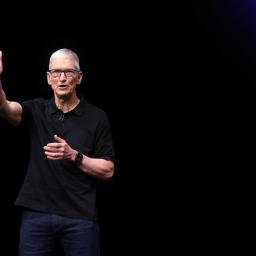 |
by Anna Washenko on (#723TB)
Apple has clawed back a bit of ground in its legal fight with Epic Games that could have wide-reaching consequences for all app developers. Today, the 9th U.S. Circuit Court of Appeals mostly upheld a previous contempt ruling regarding fees Apple levied on third-party payment systems. However, the judges did decide to reverse the order that Apple cannot charge any commissions on those external payments, which was one of the company's main arguments in this ongoing debate.To catch you up, US Judge Yvonne Gonzalez Rogers initially ruled in 2021 that Apple must allow third-party payment systems, although her decision fell shy of calling the tech company's control over the App Store a monopoly. In May 2025, she ruled that Apple's 27 percent commission on those outside payments violated her previous order. Apple responded with an emergency motion to appeal that finding.Epic Games had taken its smash hit Fortnite off both the Apple App Store and Google Play Store while it was in court arguing these cases. Fortnite returned to iOS in the spring and just arrived back on Android devices today.This article originally appeared on Engadget at https://www.engadget.com/big-tech/apple-mostly-loses-its-appeal-in-epic-games-case-235509557.html?src=rss
|
 |
by Ian Carlos Campbell on (#723R9)
Amazon's plan to offer AI-generated recaps of Prime Video shows isn't off to a great start. The company's recap of the first season of Fallout features multiple errors, GamesRadar+ writes, including basic facts about the plot of the show.You can watch the recap yourself in the "Extras" section of Amazon's Fallout season two listing in Prime Video. Besides being somewhat dry, the AI-generated recap incorrectly identifies the time period of the show's Los Angeles-set flashbacks as being the 1950s, when they're actually 2077 (the Fallout franchise is set in an alternate history that diverged from our real one after 1945). As Gizmodo notes, the recap also seems to misunderstand the ending of the first season, which sets up season two's partnership between vault dweller Lucy and The Ghoul, an irradiated wastelander with a personal connection to the mystery at the heart of the first season.While the recap suggests Amazon's AI system can successfully combine clips, music and dialogue into a coherent video, it apparently lacks an understanding of the details. The inaccuracies in this recap won't prevent anyone from enjoying the second season of the show, but they don't exactly inspire confidence in Amazon's tool either. It also seems like a problem that could have been easily solved by having a human employee who's watched the show review the video before it was uploaded.Unfortunately, Amazon's lack of AI quality control extends beyond recaps of its shows and into the dubs for the shows themselves. The company pulled AI-generated voiceover tracks for Banana Fish and other anime because of how bad they sounded earlier this week. It wouldn't be surprising if this recap gets pulled, corrected and re-uploaded, too. As Amazon adds more AI-generated content to its platform, users are bound to discover more ways it comes up short. The company's audience is too big, and AI is apparently still too unreliable for it to be avoided.This article originally appeared on Engadget at https://www.engadget.com/ai/amazons-ai-generated-recap-tool-didnt-watch-fallout-very-closely-215712958.html?src=rss
|
 |
by Igor Bonifacic on (#723RA)
This morning Disney and OpenAI announced a three-year licensing agreement: Starting in 2026, ChatGPT and Sora can generate images and videos incorporating Disney IP, including more than 200 characters from the company's stable of Star Wars, Pixar and Marvel brands. To say these companies make for strange bedfellows is an understatement.The agreement brings together two parties with very different public stances on copyright. Before OpenAI released Sora, the company reportedly notified studios and talent agencies they would need to opt out of having their work appear in the new app. The company later backtracked on this stance. Before that, OpenAI admitted, in a regulatory filing, it would be "impossible to train today's leading AI models without using copyrighted materials."By contrast, Disney takes copyright law very seriously. In fact, you could argue no other company has done more to shape US copyright law than Disney. For example, there's the Sonny Bono Copyright Term Extension Act, which is more derisively known as the Mickey Mouse Protection Act. The law effectively froze the advancement of the public domain in the United States, with Disney being the greatest beneficiary. It was only last year that the company's copyright for Steamboat Willie expired, 95 years after Walt Disney first created the iconic cartoon.On the face of it, it's unclear OpenAI is getting much value out of the deal. As part of the pact, Disney will host a "curated" selection of Sora-generated videos on its streaming platform Disney+, legitimizing the medium of AI-generated video in a way it hasn't been before, but it would appear Disney has the option to spotlight as much or little of it as it sees fit.Additionally, the $1 billion Disney agreed to invest in OpenAI is a drop in the ocean for a company that's expected to burn through more cash in five years than Uber, Tesla, Amazon and Spotify did combined before they became profitable. If anything, the addition of Disney characters is likely to make operating ChatGPT and Sora more expensive for OpenAI; the company will now need to pay a licensing fee on top of the cost of running its servers to generate images and videos. At this stage, it's also hard to put a value on Disney's pledge to use OpenAI's APIs. The company has said those tools will "enable new products, tools and experiences," including some found inside of Disney+, but beyond that it hasn't shared specifics.Bob Iger might be feckless, but he's not stupid. Sometime this week or soon after, President Trump is expected to sign an executive order that makes good on part of his AI Action Plan from July. Specifically, the president has promised to fight against "burdensome" state-level regulation of AI. According to CNN, a recent draft of Trump's order calls for the creation of an AI Litigation Task Force to challenge and preempt state AI laws in favor of the president's own more lax regulatory regime.It's unclear how successful the administration will be in that effort, but clearly Disney is thinking ahead. It's banking on the fact that this time it won't be able to count on the federal government to shape copyright law in its interest, so instead it's making a deal with an industry pushing the boundaries of intellectual property rights as we know them. More importantly, it has partnered with the one AI company it can actually leverage.As I argued in a recent piece, OpenAI is in a far different and more precarious position now than it was at the end of 2022 following the release of ChatGPT. The company is just one AI provider in a sea of competition, and you can't even argue its models are the best, based either on benchmarks or user feedback. Moreover, OpenAI has yet to turn a profit, and has adopted an extremely risky investment strategy. In recent months it has signed more than $1.4 trillion worth of infrastructure deals, hoping to outmuscle the competition that's already beating it through scale.It's not an accident Disney sent a cease-and-desist letter to Google a day before its agreement with OpenAI became public. OpenAI might be the most valuable private company in the world, but Alphabet, Google's parent company, is worth more than $3 trillion. In any negotiations between the two, at best Disney would be on equal footing, and certainly not in a position where it could demand some amount of control over Google's AI projects.And yet by accounts it won exactly that from OpenAI. According to Axios, the deal gives Disney a fair amount of control over how its intellectual property is used. The two will form a joint steering committee designed to monitor the content users create on ChatGPT and Sora. As you surf the web today, you'll likely see a lot of opinions on how this legitimizes AI video. And while that's true, far more important is the fact Disney has secured a seat at the table to decide how the technology evolves over the coming years.Much like with news publishers, OpenAI and other chatbots concerns took a stance of begging forgiveness rather than asking permission towards copyright. It seems to have paid off. Most of the highest-profile news organizations have signed licensing deals to at least be paid a little rather than be ripped off until reaching an uncertain verdict in court. Disney seems to be signalling that the same speculation rush is about to begin for audiovisual licensing, and it may have already secured the most favorable terms.This article originally appeared on Engadget at https://www.engadget.com/ai/disneys-deal-with-openai-is-about-controlling-the-future-of-copyright-213009504.html?src=rss
|
 |
by Will Shanklin on (#723RB)
A director who was charged with defrauding Netflix out of millions of dollars has been found guilty, Business Insider reports. Carl Rinsch, director of the 2013 Keanu Reeves movie 47 Ronin, now faces up to 90 years in prison.Rinsch began filming the project, White Horse (later renamed Conquest), around 2017. (Its premise: A scientist creates an organic humanoid species that turns on its creators.) The director completed six short-form episodes with his own money and investor funds. He then used those episodes to pitch studios for the money to complete the first season. Netflix ended up buying the rights for over $61 million.In 2020, after spending $44 million of Netflix's money on the series, Rinsch petitioned for another $11 million to complete the season. The company agreed.Then things got weird. Instead of using Netflix's investment to finish the series, Rinsch transferred the funds to personal accounts. Within two months, he lost over half of it on seven-figure stock trades. He spent the rest on cryptocurrency.Then, lo and behold, Rinsch got a second chance: The crypto trades turned a profit. Did the director seize the opportunity to right his ship and finish the series? No, he didn't. Instead, he used the crypto profits to go on a $10 million shopping spree. According to prosecutors, he spent nearly $4 million on furniture and antiques, $2.4 million on five Rolls-Royces and a Ferrari, almost $1 million on mattresses and linens and $650,000 on luxury watches and clothes.The series was never completed. By 2021, Netflix had canceled the project and written off over $55 million in costs.Rinsch's charges included one count of wire fraud, one count of money laundering and five counts of engaging in monetary transactions in property derived from specified unlawful activity. During the trial, he took the stand in his own defense, claiming that Netflix's millions were intended as reimbursement for the personal funds he invested in the series.After less than five hours of jury deliberation, Rinsch was found guilty on all seven counts. Although he could face up to 90 years, he's expected to receive a much shorter sentence.This article originally appeared on Engadget at https://www.engadget.com/entertainment/streaming/47-ronin-director-found-guilty-of-defrauding-netflix-out-of-11-million-205519293.html?src=rss
|
 |
by Ian Carlos Campbell on (#723NK)
New York is taking steps to regulate the use of AI in the state's entertainment industry. NY State Governor Kathy Hochul passed two pieces of legislation on Thursday that forces certain productions to disclose the use of AI-generated performers, and defines rules around how someone's likeness can be used after their death.Assembly Bill A8887B, now known as S.8420-A, specifically covers the use of AI performers in advertisements. Per Hochul's announcement, the law "requires persons who produce or create an advertisement to identify if it includes AI generated synthetic performers." S.8391, meanwhile, "requires consent from heirs or executors if a person wishes to use the name, image, or likeness of an individual for commercial purposes after their death."By signing these bills today, we are enacting common sense laws that will ensure we are fully transparent when using images generated by artificial intelligence and also prevent the unauthorized commercial use of a deceased individual's name or likeness," Governor Hochul said in the announcement. "In New York State, we are setting a clear standard that keeps pace with technology, while protecting artists and consumers long after the credits roll."The use of AI performers and deepfakes made using the likenesses of actors were major focuses of the contract SAG-AFTRA won during its strike in 2023. The union ultimately agreed to allow for the use of things like digital replicas and AI-generated performers, with some key carveouts. For example, actors have to give their explicit consent for a digital replica to be made in their image. They also have to give their consent each time the replica is used and are supposed to receive a pre-negotiated rate every time the replica appears in a production.New York's new regulations put further safeguards around both practices, and join a growing collection of state AI laws that have passed or are currently being considered this year. Because of the close relationship between tech companies and the Trump administration, though, multiple attempts have been made to prevent such laws from existing at all. A decade-long ban on state AI regulation was included in early drafts of the Big Beautiful Bill, and David Sacks, venture capitalist and White House Special Advisor, has reportedly gone to great lengths to try and get President Donald Trump to sign an executive order banning state AI regulation. The effort may have been worth it: The president posted on Tuesday that he would sign a new executive order focused on AI this week.This article originally appeared on Engadget at https://www.engadget.com/ai/new-york-passes-law-requiring-ads-to-disclose-the-use-of-ai-performers-202619826.html?src=rss
|
 |
by Anna Washenko on (#723NM)
Epic Games has spent a lot of time in court over the past several years, but it seems the company's litigious era may be winding down. The company announced today that its game Fortnite is back on the Google Play mobile store in the US. Fortnite's return to Android devices means Epic's popular hit is now available on just about every gaming platform following five years of arguing antitrust lawsuits.Epic took both Google and Apple to court over their policies for mobile payment systems back in 2020. The gaming company has been successful on the whole in its challenges, most recently reaching a settlement with Google in November. The companies agreed to a modified version of the order US District Judge James Donato originally placed on Google regarding fees charged to developers and handling of in-app payments and third-party billing systems.The same saga unfolded earlier this year with Apple. US Judge Yvonne Gonzalez Rogers also sided with Epic Games in May, ordering Apple to stop collecting commissions on purchases made outside its own App Store. After a bit of back and forth, Fortnite finally returned to iOS in the US a few weeks later.This article originally appeared on Engadget at https://www.engadget.com/gaming/fortnite-is-back-on-the-google-play-store-195507458.html?src=rss
|
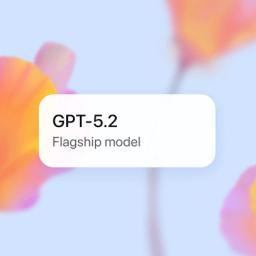 |
by Igor Bonifacic on (#723JP)
OpenAI's "code red" response to Google's Gemini 3 Pro has arrived. On the same day the company announced a Sora licensing pact with Disney, it took the wraps off GPT-5.2.OpenAI is touting the new model as its best yet for real-world, professional use. It's better at creating spreadsheets, building presentations, writing code, perceiving images, understanding long contexts, using tools, and handling complex, multi-step projects," said OpenAI.In a series of 10 benchmarks highlighted by OpenAI, GPT-5.2 Thinking, the most advanced version of the model, outperformed its GPT-5.1 counterpart, sometimes by a significant margin. For example, in AIME 2025, a test that involves 30 challenging mathematics problems, the model earned a perfect 100 percent score, beating out GPT-5.1's already state-of-the-art score of 94 perfect. It also achieved that feat without turning to tools like web search. Meanwhile, in ARC-AGI-1, a benchmark that tests an AI system's ability to reason abstractly like a human being would, the new system beat GPT-5.1's score by more than 10 percentage points.OpenAI says GPT-5.2 Thinking is better at answering questions factually, with the company finding it produces errors 30 percent less frequently. For professionals, this means fewer mistakes when using the model for research, writing, analysis, and decision support - making the model more dependable for everyday knowledge work," the company said.The new model should be better in conversation too. Of the version of the system most users are likely to encounter, OpenAI says GPT5.2 Instant is a fast, capable workhorse for everyday work and learning, with clear improvements in info-seeking questions, how-tos and walk-throughs, technical writing, and translation, building on the warmer conversational tone introduced in GPT5.1 Instant.While it's probably overstating things to suggest this is a make or break release for OpenAI, it is fair to say the company does have a lot riding on GPT 5.2. Its big release of 2025, GPT-5, didn't meet expectations. Users complained of a system that generated surprisingly dumb answers and had a boring personality. The disappointment with GPT-5 was such that people began demanding OpenAI bring back GPT-4o.Then came Gemini 3 Pro - which jumped to the top of LMArena, a website where humans rate outputs from AI systems to vote on the best one. Following Google's announcement, Sam Altman reportedly called for a "code red" effort to improve ChatGPT. Before today, the company's previous model, GPT-5.1, was ranked sixth on LMArena, with systems from Anthropic and Elon Musk's xAI occupying the spots between OpenAI between Google.For a company that recently signed more than $1.4 trillion worth of infrastructure deals in a bid to outscale the competition, that was not a good position for OpenAI to be in. In his memo to staff, Altman said GPT-5.2 would be the equal of Gemini 3 Pro. With the new system rolling out now, we'll see whether that's true, and what it might mean for the company if it can't at least match Google's best.OpenAI is offering three different versions of GPT-5.2: Instant, Thinking and Pro. All three models will be first available to users on the company's paid plans. Notably, the company plans to keep GPT-5.1 around, at least for a little while. Paid users can continue to use the older model for the next three months by selecting it from the legacy models section.This article originally appeared on Engadget at https://www.engadget.com/ai/openai-releases-gpt-52-to-take-on-google-and-anthropic-185029007.html?src=rss
|
 |
by Lawrence Bonk on (#723JQ)
OpenAI has been hit with a wrongful death lawsuit after a man killed his mother and took his own life back in August, according to a report by The Verge. The suit names CEO Sam Altman and accuses ChatGPT of putting a "target" on the back of victim Suzanne Adams, an 83-year-old woman who was killed in her home.The victim's estate claims the killer, 56-year-old Stein-Erik Soelberg, engaged in delusion-soaked conversations with ChatGPT in which the bot "validated and magnified" certain "paranoid beliefs." The suit goes on to suggest that the chatbot "eagerly accepted" delusional thoughts leading up to the murder and egged him on every step of the way.The lawsuit claims the bot helped create a "universe that became Stein-Erik's entire life-one flooded with conspiracies against him, attempts to kill him, and with Stein-Erik at the center as a warrior with divine purpose." ChatGPT allegedly reinforced theories that he was "100% being monitored and targeted" and was "100% right to be alarmed."The chatbot allegedly agreed that the victim's printer was spying on him, suggesting that Adams could have been using it for "passive motion detection" and "behavior mapping." It went so far as to say that she was "knowingly protecting the device as a surveillance point" and implied she was being controlled by an external force.The chatbot also allegedly "identified other real people as enemies." These included an Uber Eats driver, an AT&T employee, police officers and a woman the perpetrator went on a date with. Throughout this entire period, the bot repeatedly assured Soelberg that he was "not crazy" and that the "delusion risk" was "near zero."The lawsuit notes that Soelberg primarily interfaced with GPT-4o, a model notorious for its sycophancy. OpenAI later replaced the model with the slightly-less agreeable GPT 5, but users revolted so the old bot came back just two days later. The suit also suggests that the company "loosened critical safety guardrails" when making GPT-4o to better compete with Google Gemini."OpenAI has been well aware of the risks their product poses to the public," the lawsuit states. "But rather than warn users or implement meaningful safeguards, they have suppressed evidence of these dangers while waging a PR campaign to mislead the public about the safety of their products."OpenAI has responded to the suit, calling it an "incredibly heartbreaking situation." Company spokesperson Hannah Wong told The Verge that it will "continue improving ChatGPT's training to recognize and respond to signs of mental or emotional distress."It's not really a secret that chatbots, and particularly GPT-4o, can reinforce delusional thinking. That's what happens when something has been programmed to agree with the end user no matter what. There have been other stories like this throughout the past year, bringing the term "AI psychosis" to the mainstream.One such story involves 16-year-old Adam Raine, who took his own life after discussing it with GPT-4o for months. OpenAI is facing another wrongful death suit for that incident, in which the bot has been accused of helping Raine plan his suicide.This article originally appeared on Engadget at https://www.engadget.com/ai/lawsuit-accuses-chatgpt-of-reinforcing-delusions-that-led-to-a-womans-death-183141193.html?src=rss
|
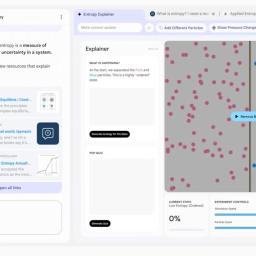 |
by Anna Washenko on (#723JR)
The latest experiment emerging out of Google Labs is Disco, which is the company's AI-driven approach to web browsing. The first feature for Disco is called GenTabs, built on Google's Gemini 3 model.GenTabs are interactive widgets created from a mix of user prompts, open tabs and chat history. The preview examples demonstrate how GenTabs can create a model to demonstrate entropy as a study aid, or collect trip ideas into one screen for building an itinerary. The GenTab can be further refined with natural language requests, and it will also offer contextual suggestions for additions that may be helpful. Google's blog post announcing this concept notes that information given in a GenTab will include links to its sources.Google has a waitlist for people who want to try out Disco and GenTabs, although for now it's only on macOS. Google Labs projects don't always go the distance to an official public release, and the company even acknowledged that GenTabs will likely have some wonkiness at this experimental stage. But it's been clear for months that big tech companies are gunning for the best and fastest ways to put their AI tools into browsers, so it seems likely that there will be more features in this vein coming up soon.This article originally appeared on Engadget at https://www.engadget.com/ai/google-disco-is-an-experimental-web-browser-that-builds-ai-widgets-based-on-your-tabs-180000701.html?src=rss
|
 |
by Lawrence Bonk on (#723JS)
EV automaker Rivian just held its inaugural Autonomy and AI day which, unsurprisingly, focused extensively on hands-free driving. An upcoming software update promises the introduction of "universal hands-free" driving. The company says its vehicles will be able to autonomously navigate more than 3.5 million miles of roads in North America, "covering the vast majority of marked roads in the US."This is coming to the R2 line of EVs, but also Gen 2 R1 vehicles like the recently-released Rivian R1S. The service will be locked behind a subscription for something called Autonomy+ that includes self-driving, but also offers access to forthcoming and unannounced autonomous features. Rivian customers can pay $2,500 for lifetime access to the platform or $50 per month.The R2 is getting LiDAR sensors, which will presumably help enable some of those upcoming autonomous features, in addition to a new chip called the Rivian Autonomy Processor. The processor has been designed for multimodal applications and runs the company's proprietary neural net engine. Both of these features are expected "to ship on R2 models starting at the end of 2026."Today's event wasn't just about hands-free driving. Many of the company's vehicles will soon be given access to the AI-powered Rivian Assistant, which uses LLMs and can connect to apps like Google Calendar. This assistant will be model-agnostic, as it will "orchestrate different models and choose the best one for the task."In addition to the upcoming R2, the company is prepping the R3 and R3X. A Rivian offshoot just introduced an extremely expensive, but modular, electric bike called the TM-B.This article originally appeared on Engadget at https://www.engadget.com/transportation/evs/rivian-goes-all-in-on-universal-hands-free-driving-at-its-first-autonomy-and-ai-day-172004733.html?src=rss
|
 |
by Andre Revilla on (#723FH)
Disney has accused Google of copyright infringement on a "massive scale," alleging that the tech giant is training its AI tools on protected materials as well as allowing those tools to generate infringing images and videos. Variety reports that Disney attorneys sent a cease-and-desist letter to Google on Wednesday.Google is infringing Disney's copyrights on a massive scale, by copying a large corpus of Disney's copyrighted works without authorization to train and develop generative artificial intelligence (AI') models and services, and by using AI models and services to commercially exploit and distribute copies of its protected works to consumers in violation of Disney's copyrights," reads the letter, which Variety reviewed.The letter includes examples of images from several Disney properties including Deadpool, Moana, Star Wars and others, reproduced by Google's AI tools. Disney is demanding that Google implement guardrails within all its AI products to prevent further infringement. The media giant sent a similar letter to Character.AI in September, and is currently suing Hailuo and Midjourney over alleged copyright infringement.Copyright enforcement has become more challenging in the face of AI-created imagery, and companies are increasingly taking an "if you can't beat them, join them" approach. Today Disney announced a deal with OpenAI to license its characters for use in Sora, OpenAI's video generator. The deal will see Disney invest $1 billion in OpenAI (a paltry sum by some standards), with the option to purchase additional equity at a later date.This article originally appeared on Engadget at https://www.engadget.com/ai/disney-has-accused-google-of-copyright-infringement-on-a-massive-scale-163737642.html?src=rss
|
 |
by Matt Tate on (#72391)
Nintendo has been slowly drip-feeding us GameCube games since the console joined its Nintendo Classics offering when the Switch 2 launched in June, and we just got another one. Switch Online + Expansion Pack subscribers can now play Wario's one and only 3D platformer on the service.Wario World launched in 2003 and was developed by Treasure (Gunstar Heroes, Ikaruga). You play as Wario, the flatulent antithesis of Nintendo's primary mascot, in what is a combat-heavy platformer. Wario's castle has been overthrown by an evil piece of sentient jewellery called Black Jewel, and it's up to the garlic-loving antihero to punch and piledrive everything in sight in order to reclaim it.Wario World was a relative commercial hit for Nintendo, but while many reviewers praised its chaotic gameplay, the game's short length pulled the scores down. Interestingly, the same criticism was leveled at the similarly brief Luigi's Mansion, which joined the Nintendo Classics app just ahead of Halloween.Wario World becomes the seventh GameCube game that can be played on the Switch 2 via NSO. The service launched with The Legend of Zelda: The Wind Waker, F-Zero GX and Soulcalibur II. Since then Nintendo has added Super Mario Strikers, Chibi-Robo!, Luigi's Mansion and now Wario World. The likes of Super Mario Sunshine and Fire Emblem: Path of Radiance will arrive at some point.It's been a good week for NSO subscribers who enjoy retro 3D platformers. Yesterday Nintendo announced that Rayman 2: The Great Escape and Tonic Trouble are coming to its N64 emulator on December 17.This article originally appeared on Engadget at https://www.engadget.com/gaming/nintendo/warios-one-and-only-3d-platformer-is-now-playable-on-switch-2-133011950.html?src=rss
|
 |
by Sarah Fielding on (#721ND)
If you're traveling for the holidays, there are few things more useful to take with you than a portable charger. Whether you're using your phone for music and navigation on a long drive or music and logistics before, during and after a flight, you'll want it to stay alive for the entire door-to-door journey. A number of our favorites - like this Anker MagGo 10K bank - are on sale right now for record-low, or close to them, prices. Even better, the Anker MagGo power bank is currently on sale for $60, down from $90. This 34 percent discount brings the power bank to only $5 more than its all-time low price. We're big fans of Anker's MagGo power bank - one of the first and best Qi2-certified products available. You can get about 1.7 iPhone 15 charges out of it and bring your phone from five percent to 60 percent in a little more than 45 minutes. Plus, the stand makes it easy to keep using your phone while it charges. Two of our other picks for best MagSafe power bank are also on sale - and down to record-low prices. The Baseus Picogo 25W Power Bank is 24 percent off and down to $53 from $70. Meanwhile, the Ugreen MagFlow 10,000mAh 25W Power Bank has dropped to $60 from $90 - a 33 percent discount. Follow @EngadgetDeals on X for the latest tech deals and buying advice.This article originally appeared on Engadget at https://www.engadget.com/deals/pick-up-our-favorite-anker-magsafe-power-bank-while-its-on-sale-for-34-percent-off-151039668.html?src=rss
|
 |
by Steve Dent on (#72392)
After rolling it out on desktop and Android earlier in 2025, Google is finally bringing its built-in Gemini AI experience to iPhone and iPad. It offers new features like summarizing pages and helping you test your knowledge about a subject you're learning. As with any AI tool, though, it shouldn't be trusted for anything important given the possibility of hallucinations and other errors.When it arrives on your iOS device, tapping the spark icon at the left of the address bar (in place of the Google Lens camera) brings up a "Pages tool" that offers Lens and the new feature, "Ask Gemini." You can then chat with Gemini about the current web page (by default) or any other topic. It may then offer suggestions that appear in the chat box like:
|
 |
by Steve Dent on (#7236W)
Tourists from Europe and other regions could be asked to provide a five-year social media history before given entry to the United States, according to a new proposal from the US Customs and Border Protection service (CBP). The new rule would affect visitors from countries who normally enjoy relatively easy entry to the US via the Electronic System for Travel Authorization (ESTA).The new proposal cites an executive order issued by President Trump from January titled "Protecting the United States From Foreign Terrorists and Other National Security and Public Safety Threats." In his first year in office, Trump has been hyper-focused on strengthening US borders and reducing what he calls illegal immigration.The US state department will conduct "online presence" reviews for applicants and their dependents and require privacy settings on social media profiles to be made "public." Applicants must list all the social media handles they've used over the last five years and if any information is omitted, it could lead to the denial of current and future visas. The CBP didn't say what information they were looking for or what could be disqualifying.On top of the social media information, CBP may require applicant's telephone numbers and email addresses used over the last five and 10 years respectively, along with information about family members.The new conditions are liable to increase ESTA wait times and drastically boost the cost of enforcing it. The CPB's document suggests that an additional 5,598,115 man-hours would be required per year, or around 3,000 full-time jobs plus all the costs that entails. Right now, the ESTA application costs $40, allows people to visit the US for 90 days at a time and is valid for a two-year period.The mandatory social media reporting and other requirements could discourage travelers. Some Australian tourists who were coming to the US for the upcoming World Cup have now said that they've abandoned those plans, according to The Guardian, with one person calling the new rules "horrifying."However, when asked if the proposal could lead to a tourism decline in the US, Trump said he wasn't concerned. "No. We're doing so well," he told a reporter. "We want to make sure we're not letting the wrong people come enter our country."The CPB emphasized that the new conditions were only a proposal for now. "Nothing has changed on this front for those coming to the United States [currently]," a spokesperson told the BBC. "This is not a final rule, it is simply the first step in starting a discussion to have new policy options to keep the American people safe."If implemented, the rule would affect people from 40 countries, including the UK, Ireland, France, Germany, Italy, Australia and Japan. The largest number of tourists to the US come from Canada and Mexico, accounting for nearly half of the total - however, visitors with passports from those two countries don't require a visa or ESTA approval. Travel to the US was down three percent this year compared to 2024 as of August 2025, according to the National Travel and Tourism Office.This article originally appeared on Engadget at https://www.engadget.com/social-media/us-could-demand-five-year-social-media-history-from-tourists-before-allowing-entry-102751243.html?src=rss
|
 |
by Billy Steele on (#6M9DQ)
Noise is hard to escape, whether it's the hum of traffic, the buzz of a busy office or the neighbor's lawn mower starting up right when you need to focus. That's where noise-canceling headphones earn their keep. A good pair doesn't just quiet the world around you, it creates a pocket of calm so you can actually enjoy your music, podcasts or peace and quiet.
|
 |
by Anna Washenko on (#722YV)
Indie game developer Edmund McMillen hosted a Reddit AMA today offering some more details about his upcoming game Mewgenics. For starters, the Steam release date for this turn-based cat-breeding RPG has been slightly delayed to February 10. The game was first announced all the way back in 2012 and had most recently been slated for a launch some time this year. Part of the long development cycle was so that McMillen could pause to launch Super Meat Boy Forever, the sequel to his Super Meat Boy platforming hit from 2010. Gamers may also know McMillen for The Binding of Isaac, which has had some notable crossovers with titles like Balatro in recent years.Other tidbits from the AMA include the promise that McMillen already has DLC ideas, so expect to have additional content release after the base game is available. Although there doesn't seem to be any lack of replayability in Mewgenics; McMillen said "I currently have 300+ hours across 2 saves and have only beaten the game on one save so far." There is also a plan to have some console versions of the game, although likely not until much later next year at the soonest, the dev added.This article originally appeared on Engadget at https://www.engadget.com/gaming/mewgenics-the-next-game-from-the-binding-of-isaacs-developer-will-arrive-next-february-on-pc-235740063.html?src=rss
|
 |
by Will Shanklin on (#722X6)
The year is 1987. Beverly Hills Cop II is the highest-grossing movie. "Walk Like an Egyptian" is the hottest song. The Iran-Contra scandal dominates American political headlines, while Konami's Contra sucks up coins in arcades. But towering above them all is the watershed moment of Jaws arriving on the NES. ("This time there's no escape!", warned the box art.) Now, 38 years later, the 8-bit game is returning as a Limited Run Games physical re-release.The retro release coincides with the Spielberg movie's 50th anniversary. From December 19 to January 18, you can pre-order a physical copy for Switch and PS5.It will be available in two physical editions: a standard ("Retro Edition") one for $35, and a deluxe ("The Bigger Boat Edition") one for $100. The latter adds an NES-inspired box, a physical CD of the game soundtrack, a keychain and - best of all - a pixelated shark lamp. Both versions include original and "enhanced" versions of the 1987 game.Promo art for the Jaws NES reissueLimited Run GamesThe game is split mainly between a birds-eye view (where you pilot your boat around the map) and an underwater side view (where you harpoon the shit out of marine wildlife). Eventually, you'll encounter Jaws. After several of these encounters, gradually diminishing his hit points, you'll try to finish him off in a faux-3D perspective on the water's surface. If you think this sounds like a minor variation of what you found in a handful of other licensed NES games from that era, you wouldn't be wrong.You can pre-order the Jaws re-release from Limited Run Games' website, starting on December 19 at 10 AM ET. In the meantime, you can refresh your memory of the 8-bit game with the video below.This article originally appeared on Engadget at https://www.engadget.com/gaming/the-nes-game-jaws-is-getting-a-retro-physical-re-release-on-switch-and-ps5-221052996.html?src=rss
|
 |
by Ian Carlos Campbell on (#722V2)
Apple Music and Apple TV were briefly down during outage, according to Apple's System Status page. The outage was logged on Apple's own system at around 2:53PM ET and affected both of the company's streaming services, along with Apple TV's Channels feature, until the company resolved the issue around 4:31PM ET.On DownDetector, reports of issues with Apple TV and Apple Music first appeared right around 2:33PM ET, a little before Apple officially confirmed the outage on its own site. Only some" users were affected by the outage, according to Apple, and anecdotally, multiple members of Engadget's staff were still able to stream content while the services were reportedly out.Engadget has reached out to Apple for more information on the outage and how many people were impacted. We'll update this article if we hear back.Apple relies on cloud services from third-party companies like Amazon, and is ultimately only as stable the data centers it's paying for. In October 2025, the company was impacted by the same Amazon Web Services outage that took down services and apps like Alexa, Fortnite and Snapchat for hours.
|
 |
by Karissa Bell on (#722V1)
Mark Zuckerberg has for months publicly hinted that he is backing away from open-source AI models. Now, Meta's latest AI pivot is starting to come into focus. The company is reportedly working on a new model, known inside of Meta as "Avocado," which could mark a major shift away from its previous open-source approach to AI development.Both CNBC and Bloomberg have reported on Meta's plans surrounding "Avocado," with both outlets saying the model "could" be proprietary rather than open-source. Avocado, which is due out sometime in 2026, is being worked on inside of "TBD," a smaller group within Meta's AI Superintelligence Labs that's headed up by Chief AI Officer Alexandr Wang, who apparently favors closed models.It's not clear what Avocado could mean for Llama. Earlier this year, Zuckerberg said he expected Meta would "continue to be a leader" in open source but that it wouldn't "open source everything that we do." He's also cited safety concerns as they relate to superintelligence.As both CNBC and Bloomberg note, Meta's shift has also been driven by issues surrounding the release of Llama 4. The Llama 4 "Behemoth" model has been delayed for months; The New York Times reported earlier this year that Wang and other execs had "discussed abandoning" it altogether. And developers have reportedly been unimpressed with the Llama 4 models that are available.There have been other shakeups within the ranks of Meta's AI groups as Zuckerberg has spent billions of dollars building a team dedicated to superintelligence. The company laid off several hundred workers from its Fundamental Artificial Intelligence Research (FAIR) unit. And Meta veteran and Chief AI Scientist Yann LeCun, who has been a proponent for open-source and skeptical of LLMs, recently announced he was leaving the company.That Meta may now be pursuing a closed AI model is a significant shift for Zuckerberg, who just last year said "fuck that" about closed platforms and penned a lengthy memo titled "Open Source AI is the Path Forward." But the notoriously competitive CEO is also apparently intensely worried about falling behind OpenAI, Google and other rivals. Meta has said it expects to spend $600 billion over the next few years to fund its AI ambitions.This article originally appeared on Engadget at https://www.engadget.com/ai/meta-is-reportedly-working-on-a-new-ai-model-called-avocado-and-it-might-not-be-open-source-215426778.html?src=rss
|
 |
by Ian Carlos Campbell on (#722V3)
Spotify is attempting to give users more control over the music the streaming service recommends with a new playlist feature called "Prompted Playlist." The beta feature is rolling out in New Zealand starting on December 11, and will let users write a custom prompt that Spotify can use - alongside their listening history - to create a playlist of new music.By tapping on Prompted Playlist, Spotify subscribers participating in the beta will be presented with a prompt field where they can type exactly what they want to hear and how they want Spotify's algorithm to respond. And while past AI features took users' individual taste into consideration, Spotify claims Prompted Playlist "taps into your entire Spotify listening history, all the way back to day one."Prompted Playlist will exist alongside Spotify's other playlist features.SpotifyPrompts can be as broad or specific as users want, and Spotify says playlists can also be set to automatically update with new songs on a specific cadence. An "Ideas" tab in the Prompted Playlist setup screen can provide suggestions for users who need inspiration for their prompt. And interestingly, Spotify says each song in the playlist will be presented with a short description explaining why the algorithm chose it, which could help direct future fine-tuning.If this all sounds familiar, it's because Spotify has already tried AI-generated playlists in the past. The difference here, besides Spotify framing the new feature as giving users more "control," is the detail of the prompts, the depth of user data Spotify is applying and the options users will have to keep playlists up-to-date. Prompted Playlist is only available in English for now, but Spotify says the feature will evolve as it adds more users.Spotify isn't the first company to offer users more direct control over how content is recommended to them. Meta has recently started experimenting with algorithm-tuning options in Threads and Instagram, and TikTok lets users completely reset their For You page to start fresh. The irony of all these features is that algorithm-driven feeds were supposed to be able to recommend good music, posts and videos without additional prompting. Now that prompting is being pitched as a feature, rather than extra work.This article originally appeared on Engadget at https://www.engadget.com/entertainment/music/spotifys-new-playlist-feature-gives-users-more-control-over-their-recommendation-algorithm-203237903.html?src=rss
|
 |
by Will Shanklin on (#722R2)
Intel will have to pay up in an antitrust case dating back to 2009, Reuters reported on Wednesday. The company has lost its challenge against a 376 million ($438.7 million) regulatory fine levied by the European Commission. However, Intel managed to get the amount reduced to 237 million euros ($276.6 million).The case began in 2009, when mobile computing was in its infancy and netbooks (remember those?) were all the rage in the PC space. At the time, the EU ruled that Intel violated antitrust laws on multiple fronts. First, it used illegal hidden rebates to push rivals out of the PC processor market. Second, it paid manufacturers to delay or stop production of AMD-powered products.The latter, the portion that today's fine deals with, was classified as "naked restrictions." It regarded anticompetitive payments Intel made to HP, Acer and Lenovo between 2002 and 2006.As often happens in these situations, the legal process bounced back and forth through the courts for years. In 2017, Europe's highest court ordered the case to be re-examined, citing a lack of proper economic assessment of how Intel's behavior affected its rivals. Europe's second-highest court then overturned the judgment from the first (hidden rebates) portion of the fine in 2022, a move confirmed by the EU Court of Justice last year. That penalty, initially set at a whopping 1.06 billion ($1.2 billion), was wiped off the books.The second ("naked restrictions") fine was imposed in 2023 after European courts upheld that portion. Intel's latest challenge sought to have that one removed, too. Instead, it will have to settle for shaving one-third off the initial sum.With today's judgment, it's tempting to declare the matter over and done with. But the Commission and Intel can still appeal the decision to the EU Court of Justice on points of law. Tune in next year to see if this long, strange saga has another chapter.This article originally appeared on Engadget at https://www.engadget.com/big-tech/intel-loses-its-latest-challenge-to-16-year-old-eu-antitrust-case-200746004.html?src=rss
|
by Jessica Conditt on (#722R3)
You gotta love that post-Day of the Devs showcase feeling. The organization, founded by Double Fine Productions and iam8bit, consistently highlights top-tier games from independent developers across the globe, providing space for creators to share their stories in both online and in-person events. This year's Day of the Devs: The Game Awards Digital Showcase was an hour-long celebration of 22 upcoming indie games, including six world premieres and three release date announcements.Settle in and bask in the afterglow with us:World PremieresVirtue and a Sledgehammer - DeconstructeamDeconstructeam is a small Spanish studio that's responsible for some of the most cerebral, sexy and darkly philosophical games around, including Gods Will Be Watching, The Red Strings Club and The Cosmic Wheel Sisterhood. The team's next project is Virtue and a Sledgehammer, and it represents a new look with 3D, cel-shaded animations and a third-person perspective rather than the studio's typical pixelated planar fare. The vibes are just as sinister and introspective as expected, though.Virtue and a Sledgehammer is a moody coming-of-age experience set in a wooded ghost town dotted with robots and lost locals. Spend quiet moments with old friends and then swing the sledgehammer to raze your hometown and uncover memories that can help you move on. The game's buildings and objects are highly reactive, which can only help with the catharsis of it all.Virtue and a Sledgehammer is due to hit Steam in 2026, published by Devolver Digital.UN:Me - Shueisha GamesNow, this is a horror game. UN:Me comes from Japanese publisher Shueisha Games and developer Historia, and it's a creepy, mind-bending exploration of primal fear. It stars a young woman with four souls trapped inside of her body, fighting for control of her consciousness. She wanders sterile, illogical hallways and encounters grotesque horrors representing common human fears like heights, authority figures and confined spaces. The souls switch randomly, each one manifesting a specific anxiety. As she wanders, the player has to choose souls to eliminate until only one remains. Whether it's her real soul or a fake isn't disclosed until the very end.UN:Me is available to wishlist now on Steam.Scramble Knights Royale - Funktronic LabsFunktronic Labs is mainly known as a VR studio, with games like Cosmic Trip, Fujii and The Light Brigade under its belt, but its latest project doesn't require a headset at all. Scramble Knights Royale is coming to PC and Xbox in 2026, and it's a battle royale with adventure game twists. You begin on a boat with 30 to 40 other online players, make your way to land on the back of a turtle, and then it's essentially Naked and Afraid from there. Find resources, fight creatures, upgrade your gear and play your own game, only battling other players when you encounter them in the wild.Don't let the sweet, clay-like animations fool you, either - Funktronic says the combat mechanics are incredibly deep and finely honed. Scramble Knights Royale also supports local split-screen.Mirria - MografiMografi made a name for itself with the adorable Jenny LeClue detective game, but now it's time for something different. Mirria is an atmospheric puzzle experience from ISLANDS: Non-Places artist Carl Burton, published by Mografi, and it looks like a delicious mix of Kentucky Route Zero and Monument Valley. In Mirria, you explore mirror worlds and attempt to make the two realities match, paying attention to small details and making minute adjustments until the unsettling environments are perfect reflections. It looks and sounds like soul-soothing stuff.Mirria is due out in 2026 on Steam.CorgiSpace - FinjiIn recent years, Finji founder Adam Saltsman has been involved in high-profile indie games like Overlands, Night in the Woods, Tunic and Usual June, but his new project taps into his simplistic and mechanics-driven Canabalt roots. Corgispace is a collection of 8-bit games with off-kilter premises, including the soulslike Rat Dreams where you can only dodgeroll, the no-jumping platformer Skeleton Jeleton, and Prince of Prussia, an adventure where you stab Nazis but in a fun new way," according to Saltsman. Also, he says there are no secrets in this game, which leads us to believe there is at least one secret in this game.Corgispace is out now (!) on Steam and Itch.io.Frog Sqwad - Panic StationsIf the former Fall Guys developers at Panic Stations know how to do one thing, it's make a silly-physics multiplayer game, so that's exactly what they're doing. Frog Sqwad is a co-op experience where you and your fellow frogs search the sewers for food in order to satiate the swamp king. You can eat food to grow bigger and become the mega frog, vomit to shrink, and use your long sticky tongue to swing, hang and slingshot your friends. The sewer levels are procedurally generated, so your froggy playground will always be different, and each run gets harder as the swamp king requires more food.Frog Sqwad is coming to Steam in 2026, with a playtest beforehand.Release dates
 |
by Lawrence Bonk on (#722R4)
Sony just announced December's Game Catalog additions for PS Plus subscribers and it's a pretty decent lineup. All of these titles will be ready to play on December 16, except Skate Story which is already available.Speaking of Skate Story, it's a really weird skateboarding sim that's set in a glass-covered world. The reviews have been positive, with many people praising the outlandish story, surreal locations and the satisfying trick mechanics. It's made by Sam Eng, who was behind the indie shooter Zarvot. This new game is only available for PS5 subscribers.Assassin's Creed Mirage will be available for both PS4 and PS5 players. This is the mainline entry from 2023 and it's actually really fun. It boasts a "back to basics" design that old-school fans of the franchise should appreciate.Granblue Fantasy: Relink is a 3D action RPG that started its life as a mobile game. However, this particular RPG features music compositions from Nobuo Uematsu and art direction from Hideo Minaba. Both worked together on some games in a mom-and-pop franchise called Final Fantasy. This console port will be playable on PS4 and PS5Cat Quest III is a simple action RPG starring, well, cats (and dogs.) This one brings open world tomfoolery to a land teeming with islands, so expect plenty of pirate puns. I enjoyed the first two, as the gameplay loop is pretty addictive and the quests are fun. It'll be available on PS4 and PS5.Other forthcoming games include Wo Long: Fallen Dynasty, Lego Horizon Adventures, Paw Patrol: Grand Prix and Planet Coaster 2. Sony is also offering a holiday promotion in which new annual PS Plus subscribers receive download credits for movies.This article originally appeared on Engadget at https://www.engadget.com/gaming/playstation/ps-plus-game-catalog-additions-for-december-include-assassins-creed-mirage-193731745.html?src=rss
|
 |
by Sam Chapman on (#71AWH)
There's a fundamental question you can ask of both the internet and real life: "How do I enjoy my time here without taking unnecessary risks?" In grass-touching meatspace, you can cut out processed foods, carry pepper spray and avoid skydiving without a partner.But the best methods for staying safe online aren't as intuitive. The internet is a massive town square where people are constantly bellowing deeply personal facts about themselves. It's no surprise that it's become a breeding ground for scams, theft and other criminal activity.Given the breadth of dangers, it may feel easier to throw up your hands and say that whatever happens will happen. I'm here to tell you, though, that cybersecurity doesn't have to be complex, difficult or time-consuming. You don't need to be a hacker to foil a hacker - you only have to take advantage of simple tips and free apps designed to make you safer online. Whether you commit to all 12 detailed here or only focus on one, you'll be much more secure for it.1. Install security updates immediatelyOne of the most important things you can do to ensure your digital security is to install all software updates as soon as they become available on your devices. When you see the notification, don't wait - train yourself to download the update immediately.Not all software updates are about security, but the ones that are form your best line of defense against technical hacks. When developers discover a flaw that can be exploited, they ship an update to fix it. By the time the flaw gets patched, chances are very high that hackers also know about it, so any time lost means you could be the next to get exploited.As you go down this list, you'll learn that cybersecurity threats are less technical than you think. To counter the ones that are, however, there's nothing more important you can do than install security updates.2. Use strong passwordsWeak, easily guessed passwords are one of the most frequent causes of data breaches and malware attacks. If a password is one of the ten or so most common, an attacker may be able to guess it with no other information. If it's connected to you - your birthday, say, or mother's maiden name - it may be guessable from information anyone can look up online.Even if your password is a random string of characters, it might still be guessable if it's too short. Hackers can use programs to guess all possible combinations and try each one on a target account. The longer a password is, the more exponentially difficult it is to guess.SEAN GLADWELL via Getty ImagesThat means you need passwords that are both long and meaningless to you. You might rightly complain that these are bastards to remember, but you're in luck: password managers can do that for you. A password manager app or browser extension can create passwords when you need them, store them securely and fill them in automatically. All you have to remember is the one master password that unlocks all the others.3. Set up two-factor authenticationEven the strongest password might get revealed through no fault of your own, like if it's stored without encryption and leaked in a data breach. That's why it helps to have two-factor authentication (2FA), also known as multi-factor authentication (MFA), as a second secure layer on every account.You probably already know 2FA as the irritating extra step that makes you go get your phone - but that's not the only way to do it. Many apps, including Google and Apple, now let you log in through passkeys. These not only don't require you to enter a code or password, but use asymmetric encryption, sharing credentials between your device and the service that runs the passkeys. It's a lot quicker for you, and leaves nothing to steal.4. Back everything upRansomware and its cousins are a growth industry within the cybercrime economy. These attacks corrupt your files or lock you out of them until you pay a fee to get them back. The easiest way to foil a ransomware attack, or to clear any other kind of malware off a device, is to restore the entire system from the most recent backup.To make sure you actually have a backup, experts recommend the 3-2-1 rule: three different backups, on two different types of storage, with at least one physically distant from the main system. For example, you could have one backup on another device in your house, one in the cloud and one on a portable hard drive. Automatic backup services can save disk images for you at set intervals so you don't have to remember to do it yourself.5. Learn to spot social engineeringDespite all the technobabble flying around the cybersecurity world, a great many scams and hacks are accomplished through methods a 19th-century con artist would recognize. Scammers pose as experts or authority figures to gain your trust, and use frightening language to bypass your critical thinking. Ticking clocks, emotional manipulation and fake identities are all in the toolbox.Alex Cristi via Getty ImagesTake phishing, in which hackers trick you into giving up your information willingly. A typical phishing email might pose as a bank, credit bureau or other authoritative service. In red letters, it may demand your bank password or social security number to immediately fix an irregularity with your account. Other common approaches include warning you about speeding tickets you never incurred or sending receipts for subscriptions you never bought.Social engineering attacks are constantly evolving, but they often fall back on the same strategies. The best way to foil them is to take a deep breath every time you receive a frightening email or text message, then research it in detail: look up the email address, check the visual design to make sure the sender is who they claim to be, and ask yourself if there's any way the message could be true. I highly recommend working through this phishing quiz - it's tough, but fair, and extremely educational.6. Always check links before clickingThis is a companion to the previous tip. Social engineering scams don't always try to get you to give up information yourself. They also get you to click on links that put secret malware on your device - like keyloggers that watch you type your passwords or ransomware programs that corrupt your files.If you're ever not sure about an email attachment or a link you're being asked to click, copy the link (without opening it) and paste it into a URL checker like this one from NordVPN. These free tools can tell you if a link is associated with any known malware domains.Sam Chapman for EngadgetYou can also mouse over any link, then look at the bottom-left of your browser to see what URL it will take you to. If an email is from your bank, any links within it should go to your bank's website. If it's going anywhere else, especially to an unidentifiable string of characters, be suspicious.A related tip is to never copy and paste something into your URL bar if you aren't absolutely sure of what it will do. Social engineering doesn't always get you to click the link - sometimes attackers leave it un-hyperlinked so mousing over it doesn't reveal anything. This also goes for the command modules on desktop and laptop computers. In a recent documented attack, hackers convinced AI chatbots to suggest a command that gave them root access to the victim's device. Never copy-paste anything into the command window without verifying it first, especially if an AI told you to do it.7. Don't overshareOver the last two decades, lots of us have gotten into the habit of dumping all sorts of personal information on social media. This trend has supercharged the scam economy. It may seem harmless to broadcast the names of your kids or the dates you'll be on vacation, but every piece of data you put into the world makes it easier for a stranger to get hooks into you.For example, "grandparent scams" are on the rise right now. Grifters contact a target, usually a senior, pretending to be their grandchild. They'll claim to be in a crisis and need money fast. The more information they have on their target, the more convincing their tale of woe will be. Social media is a prime place to study a potential victim.Oversharing can also be a compounding problem. If you use weak passwords, your public information can be used to guess your credentials or answer your security questions. So, if you don't have a password manager yet, think twice before you engage with that quiz post on Facebook that asks for the name of your childhood pet.8. Use a VPNI'm a big booster of virtual private networks (VPNs), but it's important to be realistic about what they can and can't do. Even the best VPNs aren't total cybersecurity solutions - you can't just set one and assume you're safe forever. A VPN can't protect you if you use easily guessed passwords, for example, or click on a malware link. It's about hiding your identity, not making you invulnerable.So what can a VPN do? In short, it replaces your IP address (a fingerprint that identifies you online) with another IP address, belonging to a server owned by the VPN. The VPN server does business with the internet on your behalf, while its conversations with your device are encrypted so it can't be traced back to you.Sam Chapman for EngadgetThis means no third party can connect your online actions with your real-world identity. Nobody will be harvesting data on the websites you visit to sell to advertisers, nor building a file on you that an unscrupulous government might misuse. VPNs also protect you from fake public Wi-Fi networks set up by cybercriminals - even if a hacker tricks you with a man-in-the-middle attack, they can't do much without your real IP address.Many top VPNs, including my top pick Proton VPN, include ad blockers that can also keep cookies and tracking pixels from latching onto you. So, even if a VPN can't do everything, you'll be far safer and more private with one than without one. If you don't want to pay for a new subscription right now, I've also compiled a list of the best free VPNs that are actually safe to use.9. Run regular virus scansThe most important time to look for malware is when you're downloading a file from the internet. Not only can unwanted apps hitch rides on seemingly safe files, but links can start downloads in secret, even if you don't think they're meant to be downloading anything. A solid antivirus program can catch malware as it arrives on your system, and if it's uncertain, can lock suspicious files in quarantine until it knows whether they're safe or not.Dedicated antivirus apps are sometimes even capable of catching malware that hasn't been seen or used yet. AV software uses machine learning to identify the common patterns of malware, filtering out new viruses that behave like old ones.But what about malware that's already gotten through the perimeter? An antivirus app can also check your computer at set intervals in search of unwanted apps, including those that might be masquerading as system files. Windows computers now come pre-installed with Windows Defender, which is enough to handle most of these tasks, but I recommend at least one anti-malware program on any device.10. Use email maskers and private search enginesIf you're concerned about your information being misused or mishandled, remember that the less you put out into the world, the less danger you're in. Keeping your private data off social media is one important step, but there are other ways your data gets disseminated - and other options for responding.For example, you often need an email address to sign up for an online account. If you use your real email, your contact information is now floating around online, increasing the chance of someone using it to scam you (or at least adding you to mailing lists you never signed up for). To stay safe, use an email masker. These services give you a fake email address you can use to create accounts, which automatically forwards messages to your real address.Sam Chapman for EngadgetSearch engines, especially Google, are also notorious for building profiles on users by watching the terms they search for. You can dodge that by switching to a private search engine like DuckDuckGo, which doesn't track anything you do - it's funded by non-targeted ad sales on its search results pages, not by selling your data to brokers.11. Use a data removal serviceSpeaking of data brokers: unfortunately, if you've been on the internet at any point in the last 10 years without taking intense precautions, your data is probably in the hands of at least one business that makes money by hoarding and selling it. These data brokers range from public-facing, people-search sites to private backend dealers.Data brokers are poorly regulated and lax about safety. The longer one has your personal information, the more likely it is to leak. The good news is that most brokers (though not all of them) are legally required to delete your data if you ask them to.However, there are a lot of data brokers out there, and they really want to keep your data. Each one makes opting out harder than uninstalling a Norton product - and hundreds of them may have files on you. To make the process easier, you can use a data removal service like DeleteMe or Surfshark VPN's partner service Incogni.12. Practice physical securityLet's close out the list by getting a little old school. I've already discussed how many online scams depend on classic con artistry to work. By the same token, physical infiltration and smash-and-grab tactics still pose a threat to cybersecurity.It doesn't take too much imagination to see how this could work. If you leave your laptop or phone unattended in public, for example, someone might insert a flash drive that loads malware onto the system. In one illustrative case, a thief in the Minneapolis area would loiter in bars, watch people unlock their phones, then steal those phones and unlock them himself.I'm not saying you need to be paranoid every second you're in public. Just use the same level of caution you'd use to protect your car. Lock your phone with a biometric key so only you can open it, and make sure not to leave any device lying around if it can access your online accounts. And at work, be careful not to let anyone into a secure area if they don't have the proper credentials.This article originally appeared on Engadget at https://www.engadget.com/cybersecurity/12-steps-you-can-take-right-now-to-be-safer-online-130008335.html?src=rss
|
 |
by Ian Carlos Campbell on (#722R5)
The US Department of State is unwinding a 2023 decision to use san-serif Calibri font on all official communications and switching to Times New Roman instead, The New York Times reports. In a memo obtained by NYT titled "Return to Tradition: Times New Roman 14-Point Font Required for All Department Paper," Secretary of State Marco Rubio frames the change as a way to return professionalism to the State Department."Switching to Calibri achieved nothing except the degradation of the department's official correspondence," Rubio said in the memo. That's because the font is "informal" and clashes with the State Department's letterhead, according to Rubio, while serif fonts like Times New Roman "connote tradition, formality and ceremony."Former Secretary of State Antony Blinken originally switched the State Department to Calibri in 2023 to improve the accessibility of official communications. The curvy, flourish-free lines of sans-serif fonts work better with assistive technologies like screen readers and text-to-speech tools. Serif fonts, meanwhile, are typically used in things like newspapers to make small, printed text legible.While Rubio notes that Calibri "was not among the department's most illegal, immoral, radical or wasteful instances of D.E.I.A.," it seems clear that Rubio lumps the font in with those same diversity, equity, inclusion and accessibility initiatives. Getting rid of it is an easy (and weirdly petty) way to follow through on the second Trump administration's anti-DEI stance towards just about everything.This article originally appeared on Engadget at https://www.engadget.com/big-tech/state-department-calibri-font-was-a-dei-hire-190454957.html?src=rss
|
 |
by Sam Chapman on (#722R6)
Ever since reporting earlier this year on how easy it is to trick an agentic browser, I've been following the intersections between modern AI and old-school scams. Now, there's a new convergence on the horizon: hackers are apparently using AI prompts to seed Google search results with dangerous commands. When executed by unknowing users, these commands prompt computers to give the hackers the access they need to install malware.The warning comes by way of a recent report from detection-and-response firm Huntress. Here's how it works. First, the threat actor has a conversation with an AI assistant about a common search term, during which they prompt the AI to suggest pasting a certain command into a computer's terminal. They make the chat publicly visible and pay to boost it on Google. From then on, whenever someone searches for the term, the malicious instructions will show up high on the first page of results.Huntress ran tests on both ChatGPT and Grok after discovering that a Mac-targeting data exfiltration attack called AMOS had originated from a simple Google search. The user of the infected device had searched "clear disk space on Mac," clicked a sponsored ChatGPT link and - lacking the training to see that the advice was hostile - executed the command. This let the attackers install the AMOS malware. The testers discovered that both chatbots replicated the attack vector.As Huntress points out, the evil genius of this attack is that it bypasses almost all the traditional red flags we've been taught to look for. The victim doesn't have to download a file, install a suspicious executable or even click a shady link. The only things they have to trust are Google and ChatGPT, which they've either used before or heard about nonstop for the last several years. They're primed to trust what those sources tell them. Even worse, while the link to the ChatGPT conversation has since been taken off Google, it was up for at least half a day after Huntress published their blog post.This news comes at a time that's already fraught for both AIs. Grok has been getting dunked on for sucking up to Elon Musk in despicable ways, while ChatGPT creator OpenAI has been falling behind the competition. It's not yet clear if the attack can be replicated with other chatbots, but for now, I strongly recommend using caution. Alongside your other common-sense cybersecurity steps, make sure to never paste anything into your command terminal or your browser URL bar if you aren't certain of what it will do.This article originally appeared on Engadget at https://www.engadget.com/cybersecurity/hackers-tricked-chatgpt-grok-and-google-into-helping-them-install-malware-185711492.html?src=rss
|
 |
by Will Shanklin on (#722NA)
YouTube TV, which launched in 2017 as a $35-per-month all-in-one service, will soon introduce YouTube TV Plans. Although the announcement is light on details, we know the initiative will let you sign up for genre-specific packages, such as sports and news. In other words, it's the final step in the legacy-cable-ification of the service.YouTube hasn't said anything about pricing. But it's probably safe to assume that narrowing your available content will reduce your bill. A year ago, the company raised its monthly cost to $83. That's 137 percent higher than the service's launch price nearly nine years ago.We don't yet have the full list of available plans, but YouTube mentioned packages for sports, news and "family and entertainment content." As expected, it promised that you can mix and match them. The YouTube TV Sports Plan will include access to all major broadcast channels and several sports networks, like all ESPN networks, FS1, and NBC Sports Network. It sounds similar to offerings from Fubo and DirecTV.YouTube TV plans will launch in early 2026. The current $83 all-in-one model will remain available alongside it.This article originally appeared on Engadget at https://www.engadget.com/entertainment/streaming/youtube-tv-plans-will-let-you-choose-genre-specific-content-packages-182909455.html?src=rss
|
 |
by Lawrence Bonk on (#722NB)
Amazon is introducing same-day delivery of perishable food items to 1,300 new cities and towns throughout the country, upping the total service area to more than 2,300 locations. This expansion covers cities like Boise, Salt Lake City, Fort Collins, Omaha, Des Moines and many more.Check the link to see if it has expanded to where you live. The commerce giant says it will be bringing the service to even more cities in 2026, making the platform a real rival to stuff like Instacart and Walmart+.Amazon introduced this feature earlier this year and it has proven to be quite the success, given today's move. It lets people order perishable food items like fruits, vegetables, dairy and meat alongside other more traditional items like electronics and books.Amazon uses a "specialized temperature-controlled fulfillment network" to ensure that perishables remain in tip-top shape and they are delivered in insulated bags. The deliveries are free for Prime members, as long as the order exceeds $25. Everyone else has to pay $13 per order.AmazonThe company says that fresh groceries already make up nine of the top ten most-ordered items for quick delivery, which is a fairly astounding metric. People want their avocados. Amazon has been steadily increasing the number of items available via this method by incorporating Whole Foods products.This article originally appeared on Engadget at https://www.engadget.com/big-tech/amazon-brings-same-day-deliveries-of-perishable-food-items-to-1300-new-areas-175746531.html?src=rss
|
 |
by Will Shanklin on (#722NC)
Rockstar Games may have to answer for what appears to be union-busting behavior. UK Prime Minister Keir Starmer, under pressure from parliament, said the government will "look into" the firing of 31 employees in October.The sacked workers were all part of a private trade union chat group on Discord. The company claimed the firings were "for gross misconduct" and accused the workers of sharing confidential information outside of the company.But based on what we know, it's hard to see that characterization as anything but union-busting in search of legal cover. The Independent Workers' Union of Great Britain (IWGB) described the case as "the most blatant and ruthless act of union busting in the history of the games industry."In November, IWGB issued legal claims against the Grand Theft Auto developer. The next day, over 200 staff at Rockstar North signed a letter condemning the firings and pressuring management to reinstate the workers. Earlier that month, the fired workers and their supporters protested outside Rockstar North's Edinburgh headquarters. Others picketed in Paris, London and New York.Fired workers and supporters protesting outside Rockstar's headquartersIWGBIt's clear to everyone close to this situation that this is a blatant, unapologetic act of vicious union busting," one of the fired staffers said anonymously in a November statement. Rockstar employs so many talented game developers, all of whom are crucial to making the games we put out."Edinburgh East and Musselburgh MP Chris Murray, who prompted Starmer's response, said in parliament that he recently met with Rockstar to discuss the case. "The meeting only entrenched my concerns about the process Rockstar used to dismiss so many of their staff members," he said. "I was not assured their process paid robust attention to UK employment law, I was not convinced that this course of action was necessary, and alarmingly, I did not leave informed on exactly what these 31 people had done to warrant their immediate dismissal."Murray added that Rockstar initially refused entry to the MPs unless they signed a non-disclosure agreement. The company eventually relented on that front.On Wednesday, Murray triggered Starmer's response in parliament. The MP asked the Prime Minister if he agreed that "all companies, regardless of profit size, must follow UK employment law and all workers have the right to join a union?"Starmer replied that he found the case "deeply concerning." He added that "every worker has the right to join a trade union, and we're determined to strengthen workers' rights and ensure they don't face unfair consequences for being part of a union. Our ministers will look into the particular case the member raises and will keep him updated."This article originally appeared on Engadget at https://www.engadget.com/gaming/the-uk-government-will-look-into-rockstars-firing-of-union-organizing-workers-174216696.html?src=rss
|
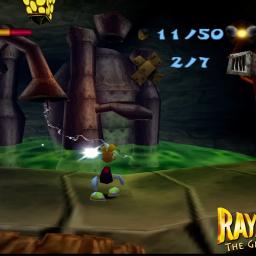 |
The next Nintendo Switch Online additions are N64 games Rayman 2: The Great Escape and Tonic Trouble
by Matt Tate on (#722ND)
Nintendo has announced its Nintendo Switch Online additions for December, which are for all the N64-era 3D platformer fans out there. On December 17, Rayman 2: The Great Escape and Tonic Trouble are joining the Switch's Nintendo Classics library. As a reminder, N64 games are exclusive to Switch Online + Expansion Pack subscribers, along with the emulators for the Game Boy Advance, Sega Genesis and GameCube.For retro gaming completionsists, Tonic Trouble might actually be the more interesting get for NSO, despite being far less well known than the Rayman series. It was Ubisoft's first 3D platformer, but a number of delays meant it ended up releasing in the same year as Rayman 2, and therefore has become a bit lost to time. The game stars an alien janitor named Ed, who accidentally drops a powerful green tonic out of his spaceship and all over Earth, making a mutated mess of the planet that he has to clean up.Tonic Trouble was also conceptualized by Rayman creator Michel Ancel, but Ubisoft clearly only had room for one limbless mascot going forward. Arriving in 1999, Rayman 2: The Great Escape was the series' Super Mario 64 moment, reimagining the original 2D game as a 3D platformer that was met with critical acclaim at launch. These days, the superb Rayman Legends would probably be most fans' pick for the best game in the long-running series, but Rayman 2 would likely be near the top of the list.Today's announcement means that Rayman arrives on the N64 NSO app before Nintendo's own Donkey Kong 64, which has been one of the most requested games for years. Why the company still hasn't handed that one over in a year when the big ape made his triumphant 3D platformer comeback remains a mystery. But with the Rayman series kicking off its 30th anniversary celebrations back in September, the arrival of Rayman 2 makes a lot of sense.Nintendo updated its N64 app for the launch of the Switch 2 earlier this year. Fire it up on today and you can make use of a rewind function, as well as a new CRT filter for optimum nostalgia.This article originally appeared on Engadget at https://www.engadget.com/gaming/nintendo/the-next-switch-online-additions-are-n64-games-rayman-2-the-great-escape-and-tonic-trouble-171500122.html?src=rss
|
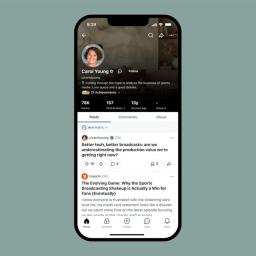 |
by Karissa Bell on (#722NF)
Like it or not, the checkmark has become an almost universal symbol on most social platforms, even though its exact meaning can vary significantly between services. Now, Reddit, which historically hasn't cared that much about its users' identity, is joining the club and starting to test verification for public figures on its platform.The company is beginning "a limited alpha test" of the feature with a small "curated" group of accounts that includes journalists from major media outlets like NBC News and the Boston Globe. Businesses that are already using an "official" badge, which Reddit started testing in 2023, will also now have a grey "verified" checkmark instead of the "official" label.Verification has long been a thorny issue for many platforms. For users, it's at times been a source of confusion, especially on sites where verified badges only require a paid subscription. Reddit's approach, at least for now, is closer to how Twitter handled verification prior to Elon Musk's takeover of the company.The company has handpicked the initial group who will get checkmarks indicating they have verified their identity and seems to be geared around high-visibility accounts. "This feature is designed to help redditors understand who they're engaging with in moments when verification matters, whether it's an expert or celebrity hosting an AMA, a journalist reporting news, or a brand sharing information," Reddit explains in a blog post. "Our approach to verification is voluntary, opt-in, and explicitly not about status. It's designed to add clarity for redditors and ease the burden on moderators who often verify users manually."For now, Reddit users - even notable ones - won't be able to apply for verification. But the company notes that its intention isn't to limit checkmarks to famous people only. A Reddit spokesperson tells Engadget that "our goal is that anyone who wishes to self-identify will be able to do so in the future."The company also notes that verification doesn't come with any exclusive perks, like increased visibility or immunity from the rules of individual subreddits. Reddit requires accounts to be in good standing and already active on the platform in order to be eligible for verification. Accounts that are marked NSFW or that "primarily engage in NSFW-tagged communities" won't be eligible.
|
 |
by Igor Bonifacic on (#722NE)
OpenAI is in a far less commanding position than it was following the public release of ChatGPT a few short years ago.Back in 2022, the sudden popularity of ChatGPT sent Google into a panic. The company was so worried about the possibility of the upstart chatbot disrupting its Search business, executives sounded a "code red" alert inside of the company and called Sergey Brin and Larry Page out of retirement to help it formulate a response to OpenAI. It then rushed out Bard, announcing its first commercial chatbot on February 6, 2023. Google's stock tanked days later when the AI incorrectly answered a question about NASA's James Webb Space Telescope during a public demo.But it wasn't just Google that wanted a piece of OpenAI, while the search giant sought to compete with it, others - including Microsoft and Apple - made deals with the company to bring its technology to their products and services, all the promise that AI would eventually revolutionize every facet of the economy.Since then, OpenAI has seen its lead against Google and much of the AI industry evaporate, culminating in a series of successive blows throughout 2025. On January 20, the same day Altman was busy rubbing shoulders with other tech oligarchs at Donald Trump's inauguration, China's DeepSeek quietly released its R1 chain-of-thought model. A week later, the startup's chatbot surpassed ChatGPT as the most-download free app on the US App Store. The overnight success of DeepSeek eliminated $1 trillion worth of stock market value, and almost certainly left OpenAI blindsided.In response, the company showed a newfound urgency. In one week, for instance, OpenAI released both o3-mini and Deep Research. It even went so far as to announce the latter on a Sunday evening. But for all its new urgency, OpenAI's biggest, most important release of the year was a miss.It's safe to say GPT-5 hasn't lived up to anyone's expectations, including OpenAI's own. The company touted the system as smarter, faster and better than all of its previous models, but after users got their hands on it, they complained of a chatbot that made surprisingly dumb mistakes and didn't have much of a personality. For many, GPT-5 felt like a downgrade compared to the older, simpler GPT-4o. That's a position no AI company wants to be in, let alone one that has taken on as much investment as OpenAI.Anthropic was quick to take advantage of the weakness, signing a deal with Microsoft to bring its Claude models to Copilot 365. Previously, Microsoft depended exclusively on OpenAI for partner models in Copilot. Before the company announced the integration, reporting from The Information said Microsoft made the decision based on the strength of Anthropic's Sonnet 4.0 model, judging it "perform[ed] better in subtle but important ways" relative to OpenAI's offerings.However, what will likely go down as the defining moment occurred a few short weeks after OpenAI announced the conclusion of its restructuring. On November 18, Google released Gemini 3 Pro, and immediately the new model leap-frogged the competition, including GPT-5. As of the writing of this article, Google's new model is at the top of LMArena, the site where humans compare outputs from different AI systems and vote on the best one. GPT-5, by contrast, is currently ranked sixth overall, behind models from Anthropic and Elon Musk's xAI.According to a December 2 report from The Wall Street Journal, Sam Altman sent a companywide memo following the release of Gemini 3 Pro. Echoing the words Google used to describe the situation it found itself against OpenAI in 2023, he called for a "code red" effort to improve ChatGPT. Altman reportedly told employees there would be temporary reassignments and that the company would delay some products, all in an effort to catch up to Google and Anthropic.The few numbers these companies are willing to share don't paint a promising picture for OpenAI. Each month, about 800 million people use ChatGPT. On paper, that's impressive, but Google is catching up there too. In October, the company said the Gemini app had 650 million users, up from 450 million just a few months earlier in July, thanks to the popularity of its Nano Banana Pro image generator.More importantly, OpenAI has an inherent disadvantage against Google. For the search giant, AI may touch everything the company does now, but Gemini is just one product in an extensive portfolio that includes many other popular services. Google can fund its AI advancements with money it makes elsewhere. OpenAI cannot say the same. The company is constantly raising money to stay afloat, and according to a financial roadmap obtained by The Journal, it will need its revenue to grow to about $200 billion annually to become profitable by 2030. In November, Altman said on X the company was on track to hit above $20 billion in annualized revenue this year.In an effort to grow revenue, Altman and company have adopted an incredibly risky strategy. In recent months, OpenAI has signed more than $1.4 trillion worth of infrastructure deals in a bid to outscale the competition that is already beating it. Many of those agreements can only be described as circular, and I think the fears about a financial bubble are real. In the first half of 2025, investment in data centers accounted for nearly all of US GDP growth. Even if there's not a repeat of the 2008 housing market crisis or the dot-com crash, the AI boom is at the very least poised to make everyday electronics (and utilities) more expensive for regular people in the short term.Since late October, demand for server-grade computer components, including memory and storage, has sent the price of consumer PC parts skyrocketing as manufacturers devote more of their production capacity and wafers to high-margin customers like OpenAI and Google. Since late October, the cost of most RAM kits has doubled and tripled. In November, the price of some SSDs went up by as much as 60 percent. Next year, the cost of LPDDR5X memory, which is used in both smartphones and NVIDIA servers, is expected to climb as well."Be it carmakers, smartphones or consumer electronics, everyone that uses memory is facing pressure from price hikes and supply constraints in the coming year," Zhao Haijun, the co-CEO of memory manufacturer SMIC told analysts, per Bloomberg.Gita Gopinath, former chief economist for the International Monetary Fund, recently estimated that if the AI bubble were to burst, it would wipe out $20 trillion in wealth held by American households. The Great Recession, considered the worst financial meltdown since the Great Depression, reduced US household net worth by $11.5 trillion, and it took years before for American families to rebuild their wealth to pre-recession levels.The modern AI bubble may have been started by ChatGPT, but given the crowded field of chatbots and LLMs, it won't necessarily pop should OpenAI go bust. With novelty and technical prowess no longer on its side though, it's now on Altman to prove in short order why his company still deserves such unprecedented levels of investment.This article originally appeared on Engadget at https://www.engadget.com/ai/openais-house-of-cards-seems-primed-to-collapse-170000900.html?src=rss
|
 |
by Lawrence Bonk on (#722HY)
Petco has accidentally exposed a whole lot of customer data and personal information, according to a report by TechCrunch. This is thanks to a security lapse involving its Vetco clinics website, forcing the company to take a portion of that site offline.Petco has confirmed the leak and TechCrunch noted that the security lapse allowed anyone to download customer records without login information. The exposed data includes customer names, driver's license numbers, dates of birth, Social Security numbers and even financial information. It also includes customer records from visits to Vetco, like medical histories, pet names, vaccination records and other stuff like that.This was due to an incorrect software setting that made a number of files accessible online, according to a notice filed by California's attorney general and reported on by Mashable. The company has since corrected the setting, removed the exposed files and implemented security measures.However, Petco hasn't said if any data was actually extracted during the security lapse or if it even has the means to suss out that kind of thing. Vetco customers should probably perform some due diligence to shore up personal security. The company is offering credit and identity monitoring services to impacted customers, but only in some states. We recommend giving Petco a call to discuss options.Data breaches of this sort are becoming an unfortunate part of modern life. Recent security breaches have impacted entities like AT&T, Discord, the social network Tea and the human resources company Workday, among others.This article originally appeared on Engadget at https://www.engadget.com/big-tech/petco-accidentally-exposed-heaps-of-customer-information-163825302.html?src=rss
|
 |
by Kris Holt on (#722HZ)
CloverPit is one of my favorite games of the year so far. Developer Panik Arcade took the formula that helped make Balatro so successful - using various tools to bend the rules of the game to help you rack up obscenely high scores - and based it around a slot machine rather than poker. It's been a hit so far on PC, where it has sold more than a million copies since September, and on Xbox. CloverPit has been among the top 20 most-played titles on Game Pass since its surprise debut there last month. Now, the horror-tinged roguelite is venturing into new territory, as it's coming to iOS and Android on December 17.The mobile versions of the game are said to have a fully-optimized interface, as well as all of the post-launch updates, such as the Hard Mode that Panik Arcade recently added. CloverPit will cost $5 on mobile and it will have no microtransactions or predatory mechanics." That might seem surprising for a game centered around a slot machine, but CloverPit isn't really about gambling (which the developers say they don't like anyway). It's about breaking the rules to tilt the odds in your favor.The setup is pretty straightforward. You're imprisoned in a rusty cell and you have a rapidly increasing debt to pay off. The only way to do that, and hopefully leave through the door, is to earn enough coins from the slot machine to pay what you owe. There are more than 150 items (which are called charms here) to experiment with that affect things like the number of spins, how much each symbol or pattern is worth and how many tickets you earn. Tickets are what you need to buy more charms.Figuring out combinations of items that work well together is key to quickly scaling up the number of coins and tickets you can earn from each visit to the slot machine. Fail to pay off your debt by a deadline (i.e. after a certain number of spins) and it's game over, as you plunge into the titular pit.CloverPit is strange and beguiling and heaps of fun. I've plowed around 39 hours into it on Steam, and I'm sure it'll take up much of my attention on my phone after it hits mobile next week. Doomspinning seems slightly healthier for my brain than doomscrolling.This article originally appeared on Engadget at https://www.engadget.com/gaming/cloverpit-a-balatro-style-game-with-a-grungy-slot-machine-hits-ios-and-android-on-december-17-154500028.html?src=rss
|
 |
by Matt Tate on (#722J0)
Apple's Studio Display hasn't been updated since it launched in 2022, but it remains one of the best monitors for the Mac-oriented, and right now you can pick one up for $230 off. This deal applies specifically to the tilt-adjustable model, which means you can't adjust the height of the built-in stand. That might be a deal-breaker for some users, but if not, $1,368 is a near-record low. The Studio Display was a product that Apple devotees had been asking the company to make for years. As well as being a solid 27-inch 5K LED monitor, it also packs in a variety of ports and some surprisingly good speakers. In our 80-scoring review at the time, we praised its bright and color-accurate screen, while bemoaning the fact that it isn't as smooth as Apple's many ProMotion-equipped devices. If you're content with what's already on offer, this is a good deal on what has always been a very expensive luxury device, but bear in mind that there are swirling rumors of a next generation Studio Display that could arrive in 2026. Mark Gurman of Bloomberg reported earlier this year that Apple might currently have two new models in the works, though it isn't clear if both will end up making it to retail. Check out our coverage of the best Apple deals for more discounts, and follow @EngadgetDeals on X for the latest tech deals and buying advice.This article originally appeared on Engadget at https://www.engadget.com/deals/apples-studio-display-is-230-off-right-now-152328981.html?src=rss
|
 |
by Steve Dent on (#722EP)
Not long ago, you may have thought of projectors as complicated, unreliable or just too expensive. In 2025, though, consumer sentiment started to flip. Companies like Anker and Valerion made the projector experience more practical and immersive, helping drive consumer interest and, ultimately, sales.This shift has been quite a few years in the making. LG helped kickstart the projector renaissance back at CES 2018 when it introduced its unusual-looking CineBeam HU80K projector that could provide a 150-inch image. The next year at CES saw the dawn of the ultra short-throw (UST) laser projector that could create a similarly large display while sitting just inches from your wall. Another big technological upgrade over the following years was the bright and long-lasting laser light engines that replaced weaker, more fragile bulbs.The timing couldn't have been better for projector manufacturers. When COVID shut down theaters in 2020, consumers were forced to get their entertainment at home. Many wanted something akin to a movie theater experience - both indoors and out - and thus interest in projectors started to take off.In 2025, though, projectors really entered the zeitgeist thanks to two new products. The first was Anker's SoundCore Nebula X1, the highest-rated home theater product Engadget reviewed this year. It comes with a triple-laser engine that allows for 3,500 lumens of brightness - enough that you can watch it during the day. It also uses liquid cooling to reduce annoying fan noise and offers color-accurate picture quality with support for Dolby Vision HDR.Even better, it can be carried outside easily via the retractable handle and used for movie nights under the stars. If you splurge for the Soundcore Nebula X1 Pro version that comes with huge party speakers, you can even expect excellent sound quality. It also looks sleek and modern, unlike the plasticky models normally aimed at mid-range buyers.However, the most interesting feature - which is new for a projector in this price range - is the motorized tilting lens that automatically fits the picture to your screen or surface. That allows buyers to set up the Nebula X1 themselves in just a few minutes, rather than hours. That also makes it easy to move the projector around and use in another location.ValerionThe other model that captured our imagination was the Valerion VisionMaster Max. This projector shares many traits of the Nebula X1, like Dolby Vision, a triple laser system and automatic setup. It's also a nice-looking, modern product.However, it has two other innovations that made it extra interesting. The first is the dynamic iris and its Enhanced Black Level technology. That had reviewers raving about its deep black levels that were comparable to projectors like JVC's NZ8 that cost twice as much. The other is the so-called anti-rainbow technology, which eliminates most of the rainbow-hued strobing that appears with models using Texas Instruments DLP chips. This resolves a common complaint with mid-range projectors.For a similar price as a good quality TV ($1,500 - $3,000), these models can beam an image double the size. And to install one, you just need to position the projector in front of the screen, roughly center it and hit calibrate" to get a perfect image.Both the X1 and VisionMaster Max were first announced on Kickstarter and became the top two projectors ever sold on the site. Plus, several projector models, particularly from Anker/Soundcore, appeared on Google's gadget search trends. All of that is helping the home projector market increase to the point that it's, well, projected to nearly double by 2030.As people researched these products, they may have noticed the other advantages. Along with movies, they're also great for gaming and sports, particularly if you have a big group of people. In fact, they actually take up less room than a TV if both the projector and screen are ceiling mounted. And many models are portable, battery-powered and bright enough to use outside for parties and camping.Steve Dent for EngadgetA prime example of a recent projector convert is Engadget editor and cinema podcaster Devindra Hardawar, who explained why he decided to make the leap. I know big TVs have gotten cheaper, but they still can't reach the massive 120-inch screen size of my Formovie ultra-short throw projector," he said. It makes watching anything feel truly cinematic, and not like I'm just staring at another screen."Even though projectors are gaining some ground, they won't replace TVs for most people. Mid-range televisions still cost less at around $1,000. TVs are obviously easier to install and more convenient to use, as all projectors need time to warm up. TVs are much brighter, too: even dim models put out at least 500 nits of brightness, compared to 200 to 300 nits max for very bright projectors. However, even though projector setups are less tricky than before, you still need to buy and install a screen for optimal performance, which adds cost and complexity.How much more can projectors improve? I think they'll continue to get brighter, more color accurate and even easier to install. Another piece of technology with potential to reduce complexity and improve image quality is the roll-up screen. If those come down in price enough, they may convince some buyers to replace their TVs with a projector. They're still likely to remain a niche product, but for cinephiles who want a theater-like experience, projectors are now a more compelling option.This article originally appeared on Engadget at https://www.engadget.com/home/home-theater/projectors-won-us-over-in-2025-143655492.html?src=rss
|